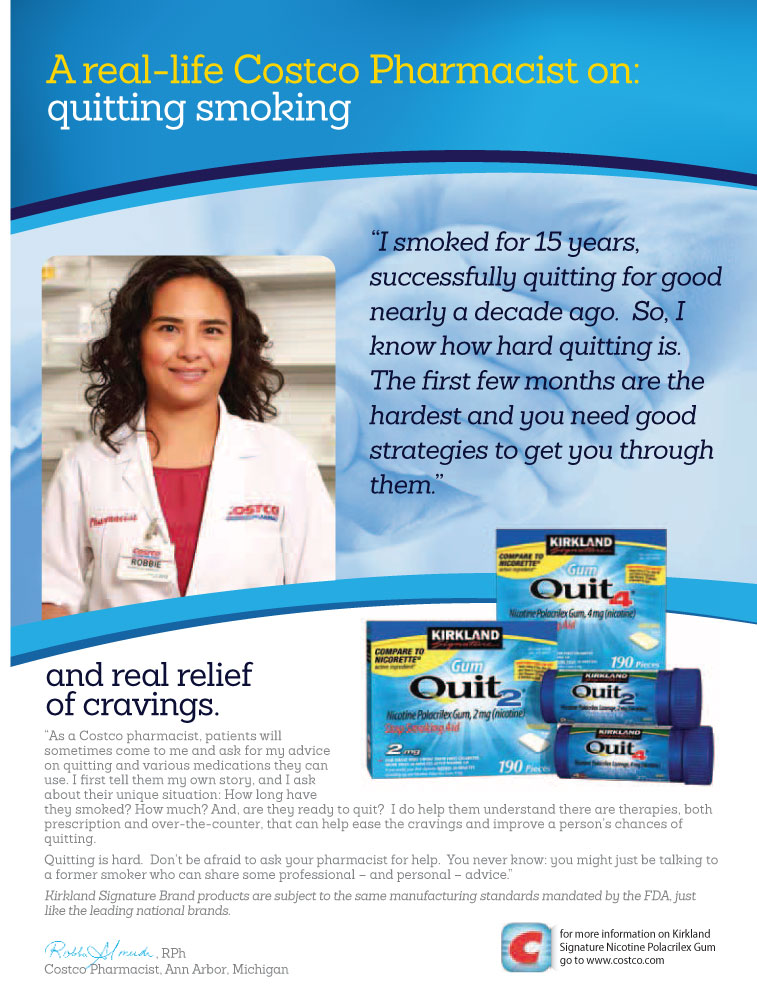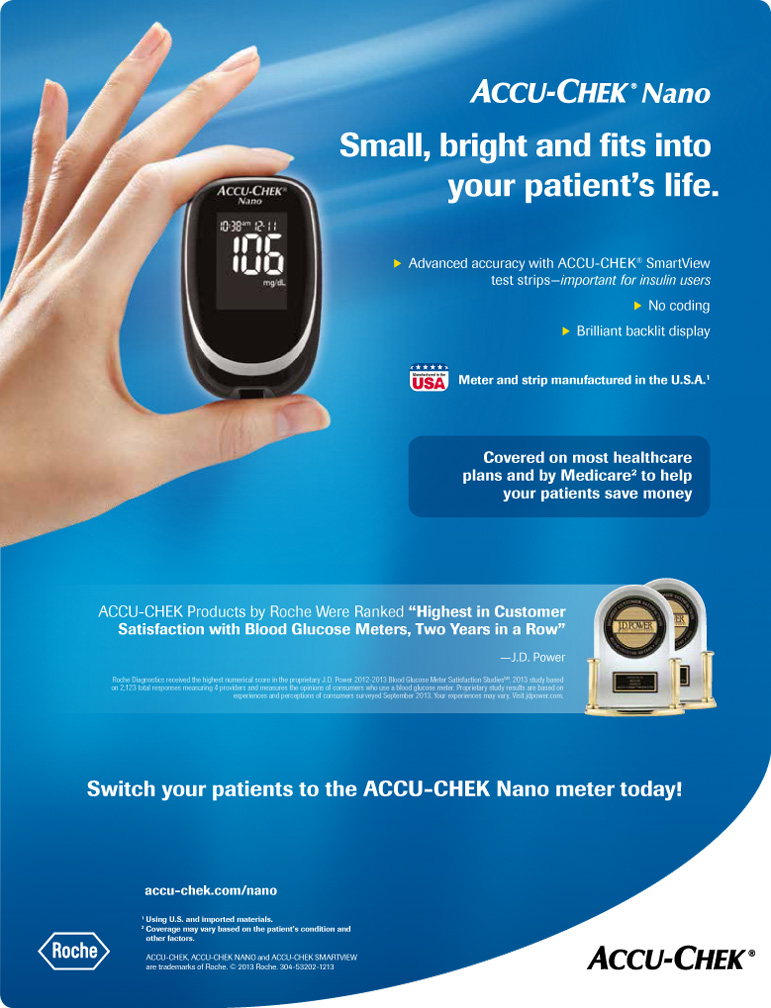
Heart disease is the No. 1 cause of death in both men and women, and people with diabetes are at a higher risk for heart disease than those without diabetes. Even though women and men with diabetes have the same risk of getting heart disease, women and men are different when it comes to heart disease and diabetes in some of the following ways: Signs of a ?Heart ?Attack?for Men ?and Women Chest pain Pain in the ?upper body ?(arm, back, neck) Shortness of breath More Common for Women Nausea Light headedness or dizziness Fatigue Women are less likely to be tested for and ?treated for heart disease than men. Because heart disease was often thought of as a “man’s disease,” it was ignored or treated less aggressively than in women. As heart disease in women gets more attention in the media and more research funding, this belief is changing. Even though men are more likely to be treated for heart disease, some studies show that men are less likely to take medicines as prescribed or follow up with doctor visits and testing. Studies have shown that women with diabetes tend to be heavier and have poorer blood glucose, blood pressure and cholesterol levels than men. This also raises their risk for heart disease. Women may have different symptoms from men when they are having a heart attack. A woman may not know she is having a heart attack as readily as a man who is having chest pain. A woman is less likely to have chest pain and may have back or jaw pain instead, or she may just feel short of breath or nauseated. As you know, the sooner people get help for a heart attack, the greater their chances for survival. The woman and those around them may not realize that it is a heart attack until it is too late. Women who don’t have diabetes tend ?not to get heart disease until after menopause because the hormones made in their bodies before menopause protect them from heart disease. However, women with diabetes don’t have the same protection from these hormones. Therefore, they have lower HDL (good) cholesterol levels, which raises their risk for heart disease. Clinical depression is about twice as common for women and is more common among people with diabetes. Having depression increases the risk for having a heart attack and heart disease. Healthy Advice for Men and Women When it comes to your health, you need to watch out for yourself and make sure your doctor is watching out for you, as well. Keep track of your own blood pressure, cholesterol and A1C levels. Be sure that your levels are checked every year. Ask your healthcare provider what your numbers are and what they mean. Follow through with testing and medicines and keep your blood pressure and blood glucose in their target ranges. There is no getting around the fact that heart disease is a serious concern for both men and women with diabetes. However, more understanding and better treatments mean that both women and men with diabetes are living longer, healthier lives. By Martha Funnell MS, RN, CDE
The post Heart Disease and Diabetes: Men vs. Women appeared first on Summer 2015 Issue | CDiabetes Online Magazine.
]]>
Heart disease is the No. 1 cause of death in both men and women, and people with diabetes are at a higher risk for heart disease than those without diabetes. Even though women and men with diabetes have the same risk of getting heart disease, women and men are different when it comes to heart disease and diabetes in some of the following ways:
Signs of a ?Heart ?Attack?for
Men ?and Women
- Chest pain
- Pain in the ?upper body ?(arm, back, neck)
- Shortness of breath
More Common for Women
- Nausea
- Light headedness or dizziness
- Fatigue
- Women are less likely to be tested for and ?treated for heart disease than men. Because heart disease was often thought of as a “man’s disease,” it was ignored or treated less aggressively than in women. As heart disease in women gets more attention in the media and more research funding, this belief is changing. Even though men are more likely to be treated for heart disease, some studies show that men are less likely to take medicines as prescribed or follow up with doctor visits and testing.
- Studies have shown that women with diabetes tend to be heavier and have poorer blood glucose, blood pressure and cholesterol levels than men. This also raises their risk for heart disease.
-
Women may have different symptoms from men when they are having a heart attack. A woman may not know she is having a heart attack as readily as a man who is having chest pain. A woman is less likely to have chest pain and may have back or jaw pain instead, or she may just feel short of breath or nauseated. As you know, the sooner people get help for a heart attack, the greater their chances for survival. The woman and those around them may not realize that it is a heart attack until it is too late.
- Women who don’t have diabetes tend ?not to get heart disease until after menopause because the hormones made in their bodies before menopause protect them from heart disease. However, women with diabetes don’t have the same protection from these hormones. Therefore, they have lower HDL (good) cholesterol levels, which raises their risk for heart disease.
- Clinical depression is about twice as common for women and is more common among people with diabetes. Having depression increases the risk for having a heart attack and heart disease.
Healthy Advice for Men and Women
 When it comes to your health, you need to watch out for yourself and make sure your doctor is watching out for you, as well. Keep track of your own blood pressure, cholesterol and A1C levels. Be sure that your levels are checked every year. Ask your healthcare provider what your numbers are and what they mean. Follow through with testing and medicines and keep your blood pressure and blood glucose in their target ranges.
When it comes to your health, you need to watch out for yourself and make sure your doctor is watching out for you, as well. Keep track of your own blood pressure, cholesterol and A1C levels. Be sure that your levels are checked every year. Ask your healthcare provider what your numbers are and what they mean. Follow through with testing and medicines and keep your blood pressure and blood glucose in their target ranges.
There is no getting around the fact that heart disease is a serious concern for both men and women with diabetes. However, more understanding and better treatments mean that both women and men with diabetes are living longer, healthier lives.
By Martha Funnell MS, RN, CDE
The post Heart Disease and Diabetes: Men vs. Women appeared first on Summer 2015 Issue | CDiabetes Online Magazine.
]]>
Print out this ad and bring it to your Costco pharmacist for your free meter. Available only at Costco Wholesale Outlets
The post TRUEresult? Blood Glucose Monitoring System appeared first on Summer 2015 Issue | CDiabetes Online Magazine.
]]>
Print out this ad and bring it to your Costco pharmacist for your free meter.
Click here for a PDF of this ad
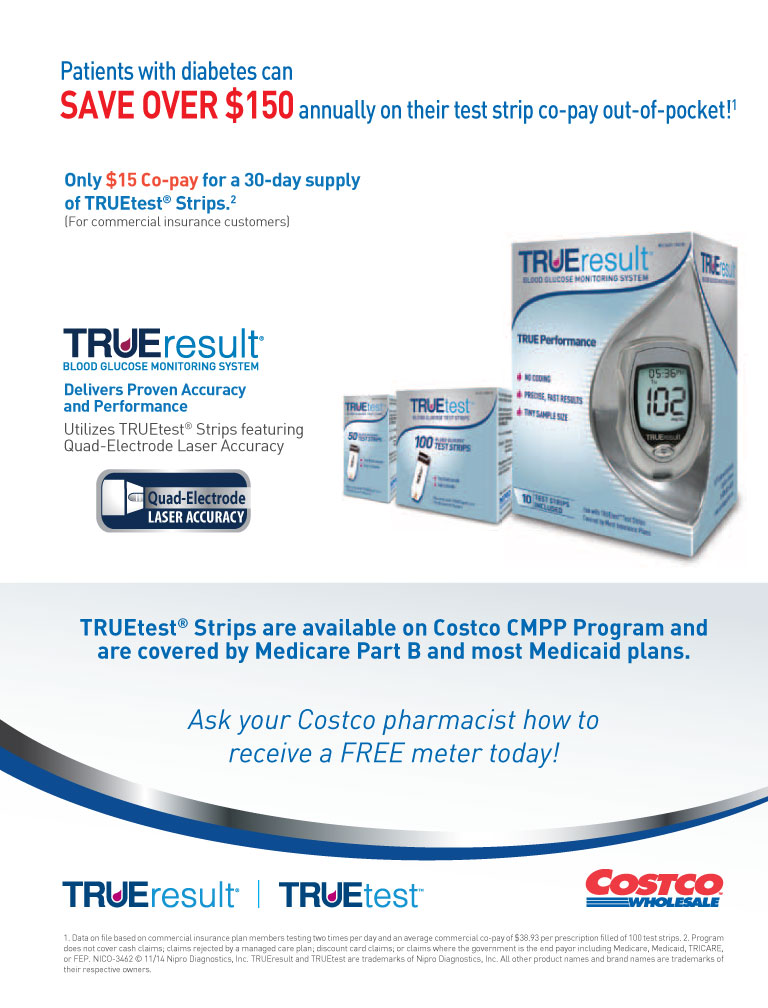
The post TRUEresult? Blood Glucose Monitoring System appeared first on Summer 2015 Issue | CDiabetes Online Magazine.
]]>
When it comes to controlling your blood glucose, you have probably researched the impact of everything from food, to exercise, to weight control. But have you looked into how spices may impact it? Cinnamon is a spice that doesn’t just add great flavor to foods; it may help to lower blood glucose as well. The best benefit it offers is that it’s all-natural and considered safe for most people with diabetes. Does it sound too good to be true? In Medieval times, cinnamon was used for medicinal purposes thanks to its high antioxidant properties. Research now shows us that it may be a powerful player in the fight against diabetes. Cinnamon may help to lower blood glucose levels by decreasing insulin resistance. When your cells become resistant to insulin, the glucose-lowering hormone in your body, they do not allow insulin to carry glucose into your cells. This results in glucose remaining in your bloodstream and rising over time, eventually leading to diabetes. Both whole cinnamon and extracted cinnamon have been shown to lower blood glucose levels. Cinnamon has also been shown to help reduce unhealthy LDL cholesterol levels and blood pressure, both of which are conditions that can increase your risk of heart disease. One down side is that everything that Mother Nature puts into the cinnamon plant also ends up in the finished product. This includes water soluble as well as fat soluble compounds. Our bodies have no problem processing water soluble compounds, but fat soluble compounds tend to be stubborn for our bodies to digest. When choosing a form of cinnamon, we suggest you look for a water extracted concentrate without the fat soluble compounds. Water extracted forms can maximize the health benefits, while minimizing the risks of fat soluble buildup. The extraction process allows the beneficial water soluble components of cinnamon to stay, providing you with the same health benefits of whole cinnamon in a much smaller portion. When looking for water extracted cinnamon, it’s important that you read the label and look specifically for the term “water extracted.” Because it is more concentrated, you can take fewer capsules to get all the health benefits of cinnamon. This may be more practical than trying to incorporate large amounts of whole cinnamon into your meal plan. CinSulin water-extracted cinnamon is backed by five human clinical studies, all of which are double blind, peer reviewed and published. In addition, UC Davis completed a meta analysis to validate the results of these human clinical studies. They found support that water extracted cinnamon lowered fasting blood glucose an average of 10%. If you are considering using cinnamon to help control blood glucose levels, make sure you discuss this with your certified diabetes educator or other healthcare provider. If you use cinnamon in combination with other medicines or supplements that also lower glucose levels, you may increase your risk of hypoglycemia. Your healthcare provider can work with you to make sure you incorporate cinnamon into your diabetes treatment plan in a way that works best for you. By Erin Palinski-Wade RD, LDN, CDE
The post How Water Extracted Cinnamon Can Improve Your Blood Glucose Control appeared first on Summer 2015 Issue | CDiabetes Online Magazine.
]]>
When it comes to controlling your blood glucose, you have probably researched the impact of everything from food, to exercise, to weight control. But have you looked into how spices may impact it? Cinnamon is a spice that doesn’t just add great flavor to foods; it may help to lower blood glucose as well. The best benefit it offers is that it’s all-natural and considered safe for most people with diabetes.
Does it sound too good to be true? In Medieval times, cinnamon was used for medicinal purposes thanks to its high antioxidant properties. Research now shows us that it may be a powerful player in the fight against diabetes.
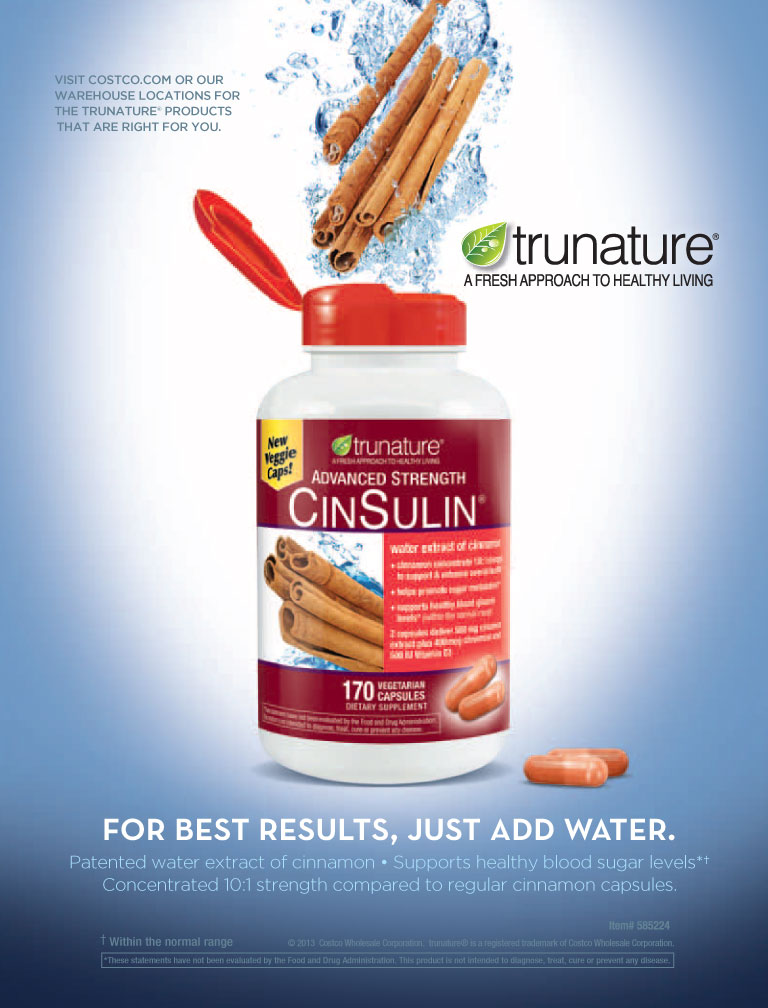 Cinnamon may help to lower blood glucose levels by decreasing insulin resistance. When your cells become resistant to insulin, the glucose-lowering hormone in your body, they do not allow insulin to carry glucose into your cells. This results in glucose remaining in your bloodstream and rising over time, eventually leading to diabetes. Both whole cinnamon and extracted cinnamon have been shown to lower blood glucose levels. Cinnamon has also been shown to help reduce unhealthy LDL cholesterol levels and blood pressure, both of which are conditions that can increase your risk of heart disease.
Cinnamon may help to lower blood glucose levels by decreasing insulin resistance. When your cells become resistant to insulin, the glucose-lowering hormone in your body, they do not allow insulin to carry glucose into your cells. This results in glucose remaining in your bloodstream and rising over time, eventually leading to diabetes. Both whole cinnamon and extracted cinnamon have been shown to lower blood glucose levels. Cinnamon has also been shown to help reduce unhealthy LDL cholesterol levels and blood pressure, both of which are conditions that can increase your risk of heart disease.
One down side is that everything that Mother Nature puts into the cinnamon plant also ends up in the finished product. This includes water soluble as well as fat soluble compounds. Our bodies have no problem processing water soluble compounds, but fat soluble compounds tend to be stubborn for our bodies to digest.
When choosing a form of cinnamon, we suggest you look for a water extracted concentrate without the fat soluble compounds. Water extracted forms can maximize the health benefits, while minimizing the risks of fat soluble buildup. The extraction process allows the beneficial water soluble components of cinnamon to stay, providing you with the same health benefits of whole cinnamon in a much smaller portion.
When looking for water extracted cinnamon, it’s important that you read the label and look specifically for the term “water extracted.” Because it is more concentrated, you can take fewer capsules to get all the health benefits of cinnamon. This may be more practical than trying to incorporate large amounts of whole cinnamon into your meal plan.
CinSulin water-extracted cinnamon is backed by five human clinical studies, all of which are double blind, peer reviewed and published. In addition, UC Davis completed a meta analysis to validate the results of these human clinical studies. They found support that water extracted cinnamon lowered fasting blood glucose an average of 10%.
If you are considering using cinnamon to help control blood glucose levels, make sure you discuss this with your certified diabetes educator or other healthcare provider. If you use cinnamon in combination with other medicines or supplements that also lower glucose levels, you may increase your risk of hypoglycemia. Your healthcare provider can work with you to make sure you incorporate cinnamon into your diabetes treatment plan in a way that works best for you.
By Erin Palinski-Wade RD, LDN, CDE
The post How Water Extracted Cinnamon Can Improve Your Blood Glucose Control appeared first on Summer 2015 Issue | CDiabetes Online Magazine.
]]>
The post trunature? Advanced Strength CinSulin?, 170 Capsules appeared first on Summer 2015 Issue | CDiabetes Online Magazine.
]]>
The post trunature? Advanced Strength CinSulin?, 170 Capsules appeared first on Summer 2015 Issue | CDiabetes Online Magazine.
]]>
If you have been told you have high?cholesterol, you most likely want to take action. If you are already on medications?to control diabetes, you may be looking for natural options to avoid additional?medications. The good news is that?cholesterol, for many individuals, can be managed through diet and lifestyle changes. ?Although this approach takes some work,?in three to six months, you may be thrilled?with the changes in your cholesterol levels. Eat Your?Veggies One of the top ways to help reduce your?cholesterol levels is?by losing weight if?you are above an ideal body weight. Losing just as little?as 5-10% of your?total body weight can?result in improved?total cholesterol,?lower LDL cholesterol levels, and elevated HDL cholesterol.?To help with this,?focus on filling your?plate at each meal?at least halfway with vegetables.?Since vegetables are?loaded with fiber and?contain few calories,?filling your plate with?these allows you to take in less calories?while feeling full?and satisfied. And?they have another health bonus as well. Vegetables are rich in?soluble fiber, a fiber that helps to bind to cholesterol and flush?it from your body. So not only will eating more vegetables help?to shed pounds, but?it will help to further?reduce cholesterol as?well. When preparing vegetables, choose steamed options?over sautéed or?fried varieties to?prevent taking in?additional calories. Get Moving Adding daily exercise?is also a terrific?way to improve cholesterol levels as?well as promote a?healthy body weight. Increasing your daily?activity can help to?reduce total cholesterol?and LDL-cholesterol?levels, while raising?the protective?HDL cholesterol.?The general recommendation is to?be physically active?for at least 60 minutes?most days of the week.?However, remember?that any movement is?better than none at all. Consider Adding?Weider’s Red?Yeast Rice PLUS Red yeast rice is?unique, natural?product that has?been used in Chinese medicine for centuries. It contains several ingredients that may help to lower cholesterol, including monacolin K, also known as lovastatin. Research has found red yeast?rice to significantly?lower unhealthy LDL cholesterol?levels. Weider’s Red?Yeast Rice PLUS?has combined the?power of red yeast?rice and added in?both phytosterols?and microalgae.?Phytosterols are steroid compounds?found in plant?cell membranes, which have been found to reduce?cholesterol and?improve heart health.?The combination of phytosterols with?microalgae allows for increased absorption?for even greater?cardiac benefits. Although red?yeast rice may be an?effective way to lower cholesterol levels, it?may pose some of the same risks as statin medications. For this reason, it may not be a safe alternative for some individuals including those with kidney or liver disease, those that are?pregnant or nursing.?If you are currently taking statins or other cholesterol medication?to lower your overall cholesterol levels?or any drugs that?may suppress your?immune system, red?yeast rice may not?be an appropriate?option for you. Weider’s Red Yeast?Rice may be an?effective, natural way to?help lower cholesterol?levels in combination?with dietary and?lifestyle changes. As?with any supplement,?it is recommended you?discuss this product?with your physician prior to use. By Erin Palinski-Wade, RD, CDE, LDN, CPT
The post Natural Ways To Lower Cholesterol appeared first on Summer 2015 Issue | CDiabetes Online Magazine.
]]>
If you have been told you have high?cholesterol, you most likely want to take action. If you are already on medications?to control diabetes, you may be looking for natural options to avoid additional?medications. The good news is that?cholesterol, for many individuals, can be managed through diet and lifestyle changes. ?Although this approach takes some work,?in three to six months, you may be thrilled?with the changes in your cholesterol levels.
Eat Your?Veggies
 One of the top ways to help reduce your?cholesterol levels is?by losing weight if?you are above an ideal body weight. Losing just as little?as 5-10% of your?total body weight can?result in improved?total cholesterol,?lower LDL cholesterol levels, and elevated HDL cholesterol.?To help with this,?focus on filling your?plate at each meal?at least halfway with vegetables.?Since vegetables are?loaded with fiber and?contain few calories,?filling your plate with?these allows you to take in less calories?while feeling full?and satisfied. And?they have another health bonus as well. Vegetables are rich in?soluble fiber, a fiber that helps to bind to cholesterol and flush?it from your body. So not only will eating more vegetables help?to shed pounds, but?it will help to further?reduce cholesterol as?well. When preparing vegetables, choose steamed options?over sautéed or?fried varieties to?prevent taking in?additional calories.
One of the top ways to help reduce your?cholesterol levels is?by losing weight if?you are above an ideal body weight. Losing just as little?as 5-10% of your?total body weight can?result in improved?total cholesterol,?lower LDL cholesterol levels, and elevated HDL cholesterol.?To help with this,?focus on filling your?plate at each meal?at least halfway with vegetables.?Since vegetables are?loaded with fiber and?contain few calories,?filling your plate with?these allows you to take in less calories?while feeling full?and satisfied. And?they have another health bonus as well. Vegetables are rich in?soluble fiber, a fiber that helps to bind to cholesterol and flush?it from your body. So not only will eating more vegetables help?to shed pounds, but?it will help to further?reduce cholesterol as?well. When preparing vegetables, choose steamed options?over sautéed or?fried varieties to?prevent taking in?additional calories.
Get Moving
Adding daily exercise?is also a terrific?way to improve cholesterol levels as?well as promote a?healthy body weight. Increasing your daily?activity can help to?reduce total cholesterol?and LDL-cholesterol?levels, while raising?the protective?HDL cholesterol.?The general recommendation is to?be physically active?for at least 60 minutes?most days of the week.?However, remember?that any movement is?better than none at all.
Consider Adding?Weider’s Red?Yeast Rice PLUS
Red yeast rice is?unique, natural?product that has?been used in Chinese medicine for centuries. It contains several ingredients that may help to lower cholesterol, including monacolin K, also known as lovastatin. Research has found red yeast?rice to significantly?lower unhealthy LDL cholesterol?levels. Weider’s Red?Yeast Rice PLUS?has combined the?power of red yeast?rice and added in?both phytosterols?and microalgae.?Phytosterols are steroid compounds?found in plant?cell membranes, which have been found to reduce?cholesterol and?improve heart health.?The combination of phytosterols with?microalgae allows for increased absorption?for even greater?cardiac benefits.
Although red?yeast rice may be an?effective way to lower cholesterol levels, it?may pose some of the same risks as statin medications. For this reason, it may not be a safe alternative for some individuals including those with kidney or liver disease, those that are?pregnant or nursing.?If you are currently taking statins or other cholesterol medication?to lower your overall cholesterol levels?or any drugs that?may suppress your?immune system, red?yeast rice may not?be an appropriate?option for you.
Weider’s Red Yeast?Rice may be an?effective, natural way to?help lower cholesterol?levels in combination?with dietary and?lifestyle changes. As?with any supplement,?it is recommended you?discuss this product?with your physician prior to use.
By Erin Palinski-Wade, RD, CDE, LDN, CPT
The post Natural Ways To Lower Cholesterol appeared first on Summer 2015 Issue | CDiabetes Online Magazine.
]]>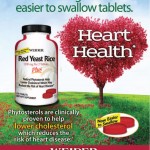
For more information click here
The post Weider Red Yeast Rice appeared first on Summer 2015 Issue | CDiabetes Online Magazine.
]]>
For more information click here
The post Weider Red Yeast Rice appeared first on Summer 2015 Issue | CDiabetes Online Magazine.
]]>
The post Colgate Total? Toothpaste appeared first on Summer 2015 Issue | CDiabetes Online Magazine.
]]>
The post Colgate Total? Toothpaste appeared first on Summer 2015 Issue | CDiabetes Online Magazine.
]]>
If you have diabetes, you probably know that you are at an increased risk for problems with your eyes, feet, skin?and nervous system. Did you know that diabetes can also cause problems in your mouth? Take Care Of Your Teeth Poor blood glucose control lets bacteria grow easily in your mouth. Having lots of bacteria in your mouth lead to?plaque buildup on your teeth. When this happens, your gums begin to pull away from your teeth, and pockets form between your teeth and gums. These pockets can become filled with germs and small bits of food. The gums then become inflamed and may bleed when you eat or brush your teeth. This condition is called “gingivitis”. Keeping your gums healthy is important because they help to hold your teeth in place. If nothing is done, you can get an infection in your gums that can go on to destroy the bone around your teeth, and they may start to move. Your teeth may fall out or need to be pulled. A recent study at the University of Copenhagen in Denmark looked at the link between oral health and diabetes. The study found that people with good oral health practices, along with a healthy diet and good stress management, had?lower blood glucose levels and healthier teeth and gums. Diabetes: A Major Cause Of Gum Disease There are many causes of gum disease, including smoking, hormonal changes, and certain cancers. Some medicines can?make your mouth dry, which can increase your risk for tooth and gum problems. This is because saliva helps slow the growth of bacteria and keeps your mouth healthy overall. Poorly controlled diabetes can also lead to gum disease. High levels of sugar in saliva make it easy for bacteria to grow there. This is why poorly controlled diabetes is a risk factor for gum disease. Also, diabetes can cause problems with blood flow to your teeth and gums. This makes it harder to repair damage to your gums and fight infection. It is also important to understand that if you develop gum disease from poor oral habits or other reasons, this could make it harder for you to control your diabetes. Other oral problems related to diabetes include: Thrush: this is an infection caused by a fungus that grows in the mouth and throat Dry mouth: this can cause soreness, ulcers, infections and cavities Dental Check-ups Are Important It’s important that you tell your dentist if you have diabetes, and keep them informed of any changes in your condition or medicines. Postpone any non-emergency dental procedures if your blood sugar is not well controlled. What Can You Do To Keep Your Mouth Healthy? The most important thing you can do is control your blood glucose levels. Have dental check-ups every six months?if possible. Avoid smoking and, if you wear dentures, remove and clean them every day. Good blood glucose control can also help prevent or relieve the dry mouth diabetes can cause. Here are some simple tips for a healthy mouth: Keep your blood glucose level under control Brush and floss every day Visit your dentist at least every 6 months. Be sure to tell them that you have diabetes Tell your dentist if your dentures do not fit right, or if your gums are sore Stop smoking. Your healthcare provider or dentist can tell you about what options there are to help you quit Call your dentist if you notice a problem. Take time to check your mouth regularly for any problems. If your gums bleed when you brush or floss, or if you notice dryness, soreness, white patches, or a bad taste in your mouth, contact your dentist right away. Remember, good blood glucose control can help keep your mouth happy and healthy for years to come. 6 Signs Of Gum Disease Red or swollen gums Gums that bleed easily when brushing or flossing Receding gums (pulling away from teeth) Loose teeth, making it hard to bite and chew Constant bad breath Dentures that don’t fit anymore By Robert Ehrman, MD
The post Oral Health And Diabetes appeared first on Summer 2015 Issue | CDiabetes Online Magazine.
]]>
If you have diabetes, you probably know that you are at an increased risk for problems with your eyes, feet, skin?and nervous system. Did you know that diabetes can also cause problems in your mouth?
Take Care Of Your Teeth
Poor blood glucose control lets bacteria grow easily in your mouth. Having lots of bacteria in your mouth lead to?plaque buildup on your teeth. When this happens, your gums begin to pull away from your teeth, and pockets form between your teeth and gums. These pockets can become filled with germs and small bits of food. The gums then become inflamed and may bleed when you eat or brush your teeth. This condition is called “gingivitis”.
Keeping your gums healthy is important because they help to hold your teeth in place. If nothing is done, you can get an infection in your gums that can go on to destroy the bone around your teeth, and they may start to move. Your teeth may fall out or need to be pulled.
A recent study at the University of Copenhagen in Denmark looked at the link between oral health and diabetes. The study found that people with good oral health practices, along with a healthy diet and good stress management, had?lower blood glucose levels and healthier teeth and gums.
Diabetes: A Major Cause Of Gum Disease
There are many causes of gum disease, including smoking, hormonal changes, and certain cancers. Some medicines can?make your mouth dry, which can increase your risk for tooth and gum problems. This is because saliva helps slow the growth of bacteria and keeps your mouth healthy overall. Poorly controlled diabetes can also lead to gum disease.
High levels of sugar in saliva make it easy for bacteria to grow there. This is why poorly controlled diabetes is a risk factor for gum disease. Also, diabetes can cause problems with blood flow to your teeth and gums. This makes it harder to repair damage to your gums and fight infection. It is also important to understand that if you develop gum disease from poor oral habits or other reasons, this could make it harder for you to control your diabetes.
Other oral problems related to diabetes include:
- Thrush: this is an infection caused by a fungus that grows in the mouth and throat
- Dry mouth: this can cause soreness, ulcers, infections and cavities
Dental Check-ups Are Important
It’s important that you tell your dentist if you have diabetes, and keep them informed of any changes in your condition or medicines. Postpone any non-emergency dental procedures if your blood sugar is not well controlled.
What Can You Do To Keep Your Mouth Healthy?
The most important thing you can do is control your blood glucose levels. Have dental check-ups every six months?if possible. Avoid smoking and, if you wear dentures, remove and clean them every day. Good blood glucose control can also help prevent or relieve the dry mouth diabetes can cause.
Here are some simple tips for a healthy mouth:
- Keep your blood glucose level under control
- Brush and floss every day
- Visit your dentist at least every 6 months. Be sure to tell them that you have diabetes
- Tell your dentist if your dentures do not fit right, or if your gums are sore
- Stop smoking. Your healthcare provider or dentist can tell you about what options there are to help you quit
- Call your dentist if you notice a problem.
Take time to check your mouth regularly for any problems. If your gums bleed when you brush or floss, or if you notice dryness, soreness, white patches, or a bad taste in your mouth, contact your dentist right away. Remember, good blood glucose control can help keep your mouth happy and healthy for years to come.
6 Signs Of Gum Disease
- Red or swollen gums
- Gums that bleed easily when brushing or flossing
- Receding gums (pulling away from teeth)
- Loose teeth, making it hard to bite and chew
- Constant bad breath
- Dentures that don’t fit anymore
By Robert Ehrman, MD
The post Oral Health And Diabetes appeared first on Summer 2015 Issue | CDiabetes Online Magazine.
]]>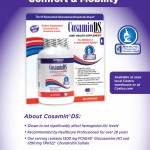
The post Cosamin ? DS, 230 Capsules appeared first on Summer 2015 Issue | CDiabetes Online Magazine.
]]>
The post Cosamin ? DS, 230 Capsules appeared first on Summer 2015 Issue | CDiabetes Online Magazine.
]]>
In order to live an active and mobile lifestyle, it is important to positively promote your joint health. So, what is joint health? The joint is where our bones connect and it is a complex structure of many specialized tissues that function together to provide the means for motion. Inside the joint, there is cartilage and viscous fluid. The cartilage is resilient with tremendous shock absorbing capability while the viscous fluid bathes and lubricates the joint. As a consequence of aging, trauma, and wear and tear on the joint, cartilage may be broken down, which can compromise joint movement. In order to remain active and live a healthy lifestyle, it is critically important to take care of your joints. How can I promote joint health? There are many ways to promote your joint health such as: eating healthy staying active and maintaining a healthy weight visiting your healthcare provider regularly taking your medications as prescribed taking dietary supplements You should also consider taking a high quality glucosamine and chondroitin sulfate supplement. Glucosamine, in combination with chondroitin sulfate, helps inhibit enzymes responsible for the breakdown of cartilage and supports the maintenance of healthy joints. Choosing the right glucosamine/chondroitin product Recent published clinical studies have further validated the combination of high quality glucosamine/chondroitin supplementation for joint health. It is important to make sure you purchase a high quality glucosamine/chondroitin combination product, and below are some of the items to look for: Reputable brand cited in published clinical studies Serving size of trademarked active ingredients are the same as used in clinical studies Quality seal from third party public health and safety organizations Take away message It is important to closely monitor and take care of your joints to remain active late in life. It is recommended to consult your physician before taking any medication or dietary supplement.
The post Introduction to Joint Health appeared first on Summer 2015 Issue | CDiabetes Online Magazine.
]]>
In order to live an active and mobile lifestyle, it is important to positively promote your joint health. So, what is joint health? The joint is where our bones connect and it is a complex structure of many specialized tissues that function together to provide the means for motion. Inside the joint, there is cartilage and viscous fluid. The cartilage is resilient with tremendous shock absorbing capability while the viscous fluid bathes and lubricates the joint. As a consequence of aging, trauma, and wear and tear on the joint, cartilage may be broken down, which can compromise joint movement. In order to remain active and live a healthy lifestyle, it is critically important to take care of your joints.
How can I promote joint health?
There are many ways to promote your joint health such as:
- eating healthy
- staying active and maintaining a healthy weight
- visiting your healthcare provider regularly
- taking your medications as prescribed
- taking dietary supplements
You should also consider taking a high quality glucosamine and chondroitin sulfate supplement. Glucosamine, in combination with chondroitin sulfate, helps inhibit enzymes responsible for the breakdown of cartilage and supports the maintenance of healthy joints.
Choosing the right glucosamine/chondroitin product
Recent published clinical studies have further validated the combination of high quality glucosamine/chondroitin supplementation for joint health. It is important to make sure you purchase a high quality glucosamine/chondroitin combination product, and below are some of the items to look for:
- Reputable brand cited in published clinical studies
- Serving size of trademarked active ingredients are the same as used in clinical studies
- Quality seal from third party public health and safety organizations
Take away message
It is important to closely monitor and take care of your joints to remain active late in life. It is recommended to consult your physician before taking any medication or dietary supplement.
The post Introduction to Joint Health appeared first on Summer 2015 Issue | CDiabetes Online Magazine.
]]>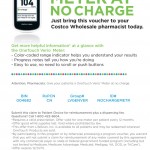
Print out this ad and bring it to your Costco pharmacist for your free meter.
The post No Charge OneTouch? Meter Coupon appeared first on Summer 2015 Issue | CDiabetes Online Magazine.
]]>
Print out this ad and bring it to your Costco pharmacist for your free meter.
Click here for a PDF of this ad
The post No Charge OneTouch? Meter Coupon appeared first on Summer 2015 Issue | CDiabetes Online Magazine.
]]>
Eating healthy foods is important for your diabetes control and your health. But you might feel it costs too much to eat the right foods these days. The good news is you can eat smart without breaking your budget. BEFORE YOU SHOP Do your homework first. Decide how much money you have to spend and ?how you’ll plan your ?meals for the week. ?Here are some tips to ?get you started: Map out your meals for the week. ?What meals will you cook at home, and how many meals, if any, will you eat away from home? Think about quick and easy ways to save money, too. For example, if you tend to grab a muffin or bagel on ?the way to work, enjoy a ?bowl of high-fiber cereal ?at home, or bring a whole-?wheat English muffin with ?some peanut butter or a ?boiled egg to work with you. ?You’ll save money. Make your list ?and check it twice.?Once you’ve planned your menu for the week, make ?your shopping list. This list ?will save you time and help keep you from buying items that you may not really need. AT THE STORE Now that you have your shopping list, it’s time to go. Use these tips to become a smart shopper: Buy Whole. ?The more “whole” foods you buy, the less room you will have in your shopping cart for processed, canned and packaged foods. Buy In Season. ?Sure, you can get blueberries and asparagus all year round, but you’ll pay a price. Careful shoppers know to buy fruits and vegetables in season. Skip The Bagged And Washed Produce. ?Pre-washed and pre-cut fruits, vegetables and salad greens do save you time. The trade-off is that they cost more and you get less for your dollar. Prep and bag your produce right when you get home from the store to make your own low-cost, ready-to-eat items. Buy By The Bag, ?Not The Piece. ?Another tip for saving money is to buy in bulk; that means buying a bag of oranges or potatoes instead of buying them one by one. Chill Out And Buy Frozen. Frozen fruits and vegetables can be just as healthy, but less costly, as fresh fruits and vegetables—as long as they’re not packed in heavy syrup, butter or cheese sauces. Try Store Brands. ?Store brands can save you lots of money over the course of the year. Costco carries ?the Kirkland line ?of high quality ?food products at great prices. Compare Costs. Read the unit price of an item on the shelf tag to help you compare costs between brands and different-sized products. The unit price tells you how much the food costs per ounce. To get the price per ounce yourself, take the price and divide it by the total number of ounces in the package. BARGAIN FOODS Certain foods are great for you and won’t leave a dent in your wallet. Here are some good foods to make a regular part of your eating plan: Brown Rice Brown rice costs about the same as white rice, but has a lot more to offer. Two-thirds of a cup of rice (two carbohydrate choices) contains 2.5 grams of fiber, while two-thirds of a cup of white rice has less than half a gram of fiber. The fiber in brown rice may help lower cholesterol levels, too. Canned Fish ?Fatty fish is great for heart health. But fresh fish can cost a lot. Luckily, canned chunk light tuna also contains heart-healthy omega-3 fatty acids, is lower in mercury than canned albacore tuna and costs less, too. Also, try canned salmon and sardines. Buy canned fish packed in water, not oil, to keep the calories low and prevent a large amount of the fish’s omega-3 fatty acids from going down the drain. Canned fish works well in sandwiches, ?salads and ?casseroles. Dried Beans, ?Peas and Lentils ?Some of the cheapest (yet healthiest) foods around, dried beans and lentils (often called legumes) are rich in fiber, protein, vitamins and minerals and are low on fat. There are so many types to choose from, too: black beans, pinto beans, kidney beans, chick peas, yellow peas and lentils are just a few you can try. Sweet Potatoes ?Sweet potatoes aren’t just for the holidays. Have a sweet potato instead of your usual white potato. They are a great source of beta carotene, vitamin C and fiber. By Amy Campbell MS, RD, LDN, CDE
The post Eating Well and Spending Less appeared first on Summer 2015 Issue | CDiabetes Online Magazine.
]]>
Eating healthy foods is important for your diabetes control and your health. But you might feel it costs too much to eat the right foods these days. The good news is you can eat smart without breaking your budget.
BEFORE YOU SHOP
Do your homework first. Decide how much money you have to spend and ?how you’ll plan your ?meals for the week. ?Here are some tips to ?get you started:
- Map out your meals for the week. ?What meals will you cook at home, and how many meals, if any, will you eat away from home? Think about quick and easy ways to save money, too. For example, if you tend to grab a muffin or bagel on ?the way to work, enjoy a ?bowl of high-fiber cereal ?at home, or bring a whole-?wheat English muffin with ?some peanut butter or a ?boiled egg to work with you. ?You’ll save money.
- Make your list ?and check it twice.?Once you’ve planned your menu for the week, make ?your shopping list. This list ?will save you time and help keep you from buying items that you may not really need.
AT THE STORE
Now that you have your shopping list, it’s time to go. Use these tips to become a smart shopper:
- Buy Whole. ?The more “whole” foods you buy, the less room you will have in your shopping cart for processed, canned and packaged foods.
- Buy In Season. ?Sure, you can get blueberries and asparagus all year round, but you’ll pay a price. Careful shoppers know to buy fruits and vegetables in season.
- Skip The Bagged And Washed Produce. ?Pre-washed and pre-cut fruits, vegetables and salad greens do save you time. The trade-off is that they cost more and you get less for your dollar. Prep and bag your produce right when you get home from the store to make your own low-cost, ready-to-eat items.
- Buy By The Bag, ?Not The Piece. ?Another tip for saving money is to buy in bulk; that means buying a bag of oranges or potatoes instead of buying them one by one.
- Chill Out And Buy Frozen. Frozen fruits and vegetables can be just as healthy, but less costly, as fresh fruits and vegetables—as long as they’re not packed in heavy syrup, butter or cheese sauces.
- Try Store Brands. ?Store brands can save you lots of money over the course of the year. Costco carries ?the Kirkland line ?of high quality ?food products at great prices.
- Compare Costs. Read the unit price of an item on the shelf tag to help you compare costs between brands and different-sized products. The unit price tells you how much the food costs per ounce. To get the price per ounce yourself, take the price and divide it by the total number of ounces in the package.
BARGAIN FOODS
Certain foods are great for you and won’t leave a dent in your wallet. Here are some good foods to make a regular part of your eating plan:
- Brown Rice
Brown rice costs about the same as white rice, but has a lot more to offer. Two-thirds of a cup of rice (two carbohydrate choices) contains 2.5 grams of fiber, while two-thirds of a cup of white rice has less than half a gram of fiber. The fiber in brown rice may help lower cholesterol levels, too.
- Canned Fish
?Fatty fish is great for heart health. But fresh fish can cost a lot. Luckily, canned chunk light tuna also contains heart-healthy omega-3 fatty acids, is lower in mercury than canned albacore tuna and costs less, too. Also, try canned salmon and sardines. Buy canned fish packed in water, not oil, to keep the calories low and prevent a large amount of the fish’s omega-3 fatty acids from going down the drain. Canned fish works well in sandwiches, ?salads and ?casseroles.
- Dried Beans, ?Peas and Lentils
?Some of the cheapest (yet healthiest) foods around, dried beans and lentils (often called legumes) are rich in fiber, protein, vitamins and minerals and are low on fat. There are so many types to choose from, too: black beans, pinto beans, kidney beans, chick peas, yellow peas and lentils are just a few you can try.
- Sweet Potatoes
?Sweet potatoes aren’t just for the holidays. Have a sweet potato instead of your usual white potato. They are a great source of beta carotene, vitamin C and fiber.
By Amy Campbell MS, RD, LDN, CDE
The post Eating Well and Spending Less appeared first on Summer 2015 Issue | CDiabetes Online Magazine.
]]>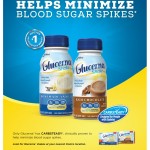
The post GLUCERNA? Vanilla Shake appeared first on Summer 2015 Issue | CDiabetes Online Magazine.
]]>
The post GLUCERNA? Vanilla Shake appeared first on Summer 2015 Issue | CDiabetes Online Magazine.
]]>
Diabetes and food do a unique dance. You need to eat a variety of foods to stay healthy, but too much of some foods can lead to weight gain and can affect your diabetes control. Your diabetes food plan should fit your nutritional needs, daily routine, eating habits, food likes, and blood glucose and diabetes goals. You and your diabetes care team should find the method that best helps you plan meals, stay healthy, and maintain proper weight and blood fat (lipid) goals. And if one approach doesn’t work for you, try another. There are many diabetes meal planning methods to choose from. Which one is best for you? Here are three popular methods ?to consider. 1. The Plate Method This simple meal planning method is easy to use at home and when you eat out. For breakfast Draw a pretend line down the middle of your 9-inch plate. Place a small carbohydrate serving of whole-grain toast or cereal on one side. Split the other half of the plate into two sections. Fill one with a meat or meat substitute, such as an egg, egg whites, low-fat cottage cheese or Canadian bacon. Fill the other part with a small piece of fruit or enjoy ? cup of juice. If you wish, you can also have a cup of skim or low-fat milk, sugar-free hot chocolate or light yogurt. If you use a bowl at breakfast, keep your portions small. For lunch and dinner Again, draw a pretend line down the middle of a 9-inch plate. Fill one side with non-starchy (low-carb) vegetables, such as green beans, zucchini, cauliflower, spinach, summer squash, Brussels sprouts, carrots, broccoli, peppers, tomatoes, cucumbers, celery and lettuce. Then, split the other side into two equal parts. Fill one part with carbohydrate-rich foods, such as baked or sweet potato, corn, peas, chickpeas, lentils, kidney beans, or whole-grain rice, pasta or bread. The last part of your plate should be filled with protein foods, such as skinless chicken or turkey, fish, eggs, lean beef or pork, low-fat cheese, low-fat cottage cheese or tofu. To round out your meal, add a small fruit serving (? cup or one small piece of fruit) and 8 ounces of skim or low-fat milk or 1 cup of light yogurt. 2. Carb Counting When you know how many carbohydrates (carbs) are in each serving of food, you ?can eat the amount that will help you maintain good glucose control. Foods that have carbohydrates will raise your blood glucose level. Experts suggest that people with diabetes eat at least 130 grams of carbohydrates each day to stay healthy. Many people eat 45–60 grams of carbs at each meal and 10–15 grams for each snack. A dietitian can help you use this method to plan your meals. If you use insulin, your dietitian can also help you use your carbohydrate totals to figure out how much insulin to take at mealtimes. 3. Glycemic Index This tool can help you get the most out of your diabetes meal plan. The Glycemic Index (GI) ranks carbohydrate foods by the effect they have on the body’s glucose level. Foods are listed as having a high, medium or low GI. Low foods have the smallest effect and high foods have the greatest. The list is not perfect but can help you make better food choices when you plan your meals. For example, if you want to eat a fruit but don’t want your glucose level to jump too high, choose one that has a low or medium GI. These meal-planning methods offer you ways to eat well while at home and away. Meet with a dietitian to learn the best way to use them. By Janis Roszler MSFT, RD, CDE, LD/N
The post Diabetes Meal Planning: Which Method is Best for You? appeared first on Summer 2015 Issue | CDiabetes Online Magazine.
]]>
Diabetes and food do a unique dance. You need to eat a variety of foods to stay healthy, but too much of some foods can lead to weight gain and can affect your diabetes control. Your diabetes food plan should fit your nutritional needs, daily routine, eating habits, food likes, and blood glucose and diabetes goals. You and your diabetes care team should find the method that best helps you plan meals, stay healthy, and maintain proper weight and blood fat (lipid) goals. And if one approach doesn’t work for you, try another.
There are many diabetes meal planning methods to choose from. Which one is best for you? Here are three popular methods ?to consider.
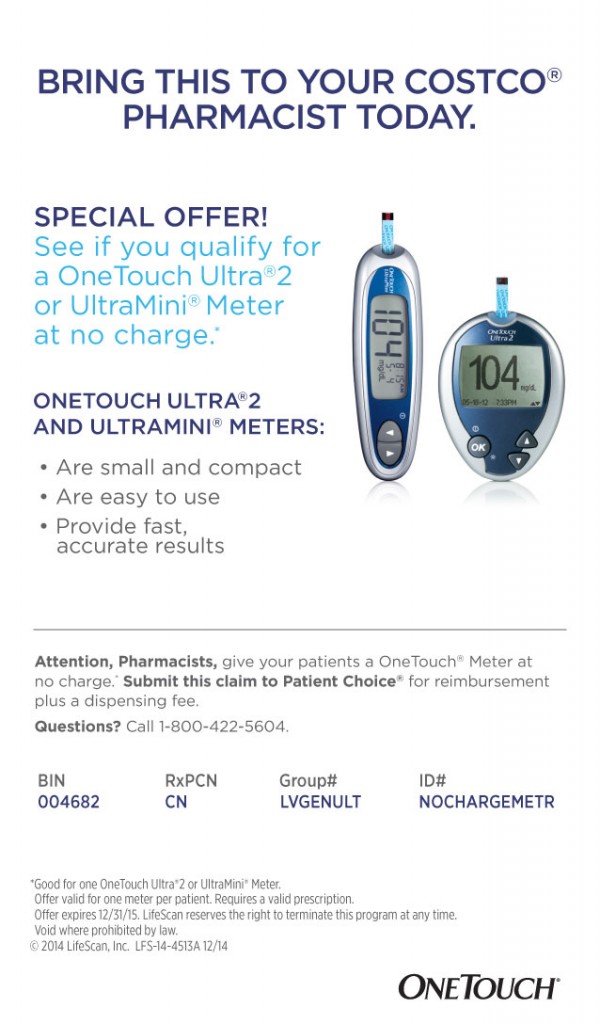 1. The Plate Method
1. The Plate Method
This simple meal planning method is easy to use at home and when you eat out.
For breakfast
Draw a pretend line down the middle of your 9-inch plate. Place a small carbohydrate serving of whole-grain toast or cereal on one side. Split the other half of the plate into two sections. Fill one with a meat or meat substitute, such as an egg, egg whites, low-fat cottage cheese or Canadian bacon. Fill the other part with a small piece of fruit or enjoy ? cup of juice. If you wish, you can also have a cup of skim or low-fat milk, sugar-free hot chocolate or light yogurt. If you use a bowl at breakfast, keep your portions small.
For lunch and dinner
Again, draw a pretend line down the middle of a 9-inch plate. Fill one side with non-starchy (low-carb) vegetables, such as green beans, zucchini, cauliflower, spinach, summer squash, Brussels sprouts, carrots, broccoli, peppers, tomatoes, cucumbers, celery and lettuce. Then, split the other side into two equal parts. Fill one part with carbohydrate-rich foods, such as baked or sweet potato, corn, peas, chickpeas, lentils, kidney beans, or whole-grain rice, pasta or bread. The last part of your plate should be filled with protein foods, such as skinless chicken or turkey, fish, eggs, lean beef or pork, low-fat cheese, low-fat cottage cheese or tofu. To round out your meal, add a small fruit serving (? cup or one small piece of fruit) and 8 ounces of skim or low-fat milk or 1 cup of light yogurt.
2. Carb Counting
When you know how many carbohydrates (carbs) are in each serving of food, you ?can eat the amount that will help you maintain good glucose control.
Foods that have carbohydrates will raise your blood glucose level. Experts suggest that people with diabetes eat at least 130 grams of carbohydrates each day to stay healthy. Many people eat 45–60 grams of carbs at each meal and 10–15 grams for each snack. A dietitian can help you use this method to plan your meals. If you use insulin, your dietitian can also help you use your carbohydrate totals to figure out how much insulin to take at mealtimes.
3. Glycemic Index
This tool can help you get the most out of your diabetes meal plan.
The Glycemic Index (GI) ranks carbohydrate foods by the effect they have on the body’s glucose level. Foods are listed as having a high, medium or low GI. Low foods have the smallest effect and high foods have the greatest. The list is not perfect but can help you make better food choices when you plan your meals. For example, if you want to eat a fruit but don’t want your glucose level to jump too high, choose one that has a low or medium GI.
These meal-planning methods offer you ways to eat well while at home and away. Meet with a dietitian to learn the best way to use them.
By Janis Roszler MSFT, RD, CDE, LD/N
The post Diabetes Meal Planning: Which Method is Best for You? appeared first on Summer 2015 Issue | CDiabetes Online Magazine.
]]>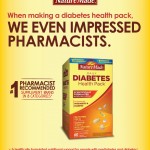
The post Nature Made? Diabetes Health Pack, 60 Packets appeared first on Summer 2015 Issue | CDiabetes Online Magazine.
]]>
The post Nature Made? Diabetes Health Pack, 60 Packets appeared first on Summer 2015 Issue | CDiabetes Online Magazine.
]]>
Keeping your blood glucose levels under control can be hard to do when you’re busy, especially if you count carbs as part of your balanced meal plan. You may not always have time to count carbs when you have to grab something fast at work, or while running errands. At these times, meal replacements may be just the help you need to keep your blood glucose levels on track. What is a meal replacement? The most common types of meal replacement are protein bars and shakes. Over the years, these products have become much better tasting. You can get them in a variety of flavors and forms. Products that are 150 calories or less are considered a snack replacement, while those that have 200 calories or more are considered full meal replacements. Snack replacements can be paired with a veggie or fruit serving to create a small meal. Most meal replacements are low in carbohydrates, and have a healthy amount of fiber and protein. How can meal replacements improve my health? One of the biggest challenges to leading a healthy lifestyle is not having enough time to make healthy meals and snacks. Meal replacements, which usually require little to no prep time, can provide you with plenty of protein, fat, carbohydrates, and calories to keep you full for a few hours. Having a healthy balance of fiber-rich carbohydrate and protein every three to four hours can help prevent blood glucose highs and lows, and stop you from craving unhealthy foods. Over time, this can help you reach and maintain a healthy weight. If you are having a hard time keeping up a healthy lifestyle, meal replacements may help you get back on track. Here are some ways you can add meal replacements to your day: Keep a meal replacement on hand to prevent overeating. Having a filling meal replacement when you are invited on a last minute outing with friends, or when you are craving sweets, can help you avoid giving in to temptation. Keep a protein bar in your bag. Whether you’re running late, stuck in traffic, or have errands to run and not enough time, a protein bar is a great way to keep your blood glucose balanced. Glucerna makes chocolate chip and peanut chocolate chip meal replacement bars, as well as 80-calorie snack bars in oatmeal raisin, chocolate caramel, and chocolate peanut flavors. The best part? They only have about 11 carbohydrates per serving. Try a protein-based shake or fruit drink for a quick and refreshing breakfast. Meal replacement shakes and drinks are great breakfast substitutes for those who usually skip breakfast. Glucerna meal replacement shakes are made just for people with diabetes, and come in delicious flavors like vanilla, chocolate, strawberry, and butter pecan. Glucerna shakes are 8 ounces each, and have 190 calories, 23 grams of carbs, 3 grams of fiber, and 10 grams of protein. Glucerna also makes Hunger Smart brand shakes in vanilla and chocolate, which are higher in protein and only 140 calories. By Staci Gulbin, MS, MEd, RD, LDN
The post Meal Replacements Can Help You Manage Diabetes on the Go appeared first on Summer 2015 Issue | CDiabetes Online Magazine.
]]>
Keeping your blood glucose levels under control can be hard to do when you’re busy, especially if you count carbs as part of your balanced meal plan. You may not always have time to count carbs when you have to grab something fast at work, or while running errands. At these times, meal replacements may be just the help you need to keep your blood glucose levels on track.
What is a meal replacement?
The most common types of meal replacement are protein bars and shakes. Over the years, these products have become much better tasting. You can get them in a variety of flavors and forms. Products that are 150 calories or less are considered a snack replacement, while those that have 200 calories or more are considered full meal replacements. Snack replacements can be paired with a veggie or fruit serving to create a small meal. Most meal replacements are low in carbohydrates, and have a healthy amount of fiber and protein.
How can meal replacements improve my health?
One of the biggest challenges to leading a healthy lifestyle is not having enough time to make healthy meals and snacks. Meal replacements, which usually require little to no prep time, can provide you with plenty of protein, fat, carbohydrates, and calories to keep you full for a few hours. Having a healthy balance of fiber-rich carbohydrate and protein every three to four hours can help prevent blood glucose highs and lows, and stop you from craving unhealthy foods. Over time, this can help you reach and maintain a healthy weight.
If you are having a hard time keeping up a healthy lifestyle, meal replacements may help you get back on track. Here are some ways you can add meal replacements to your day:
- Keep a meal replacement on hand to prevent overeating. Having a filling meal replacement when you are invited on a last minute outing with friends, or when you are craving sweets, can help you avoid giving in to temptation.
- Keep a protein bar in your bag. Whether you’re running late, stuck in traffic, or have errands to run and not enough time, a protein bar is a great way to keep your blood glucose balanced. Glucerna makes chocolate chip and peanut chocolate chip meal replacement bars, as well as 80-calorie snack bars in oatmeal raisin, chocolate caramel, and chocolate peanut flavors. The best part? They only have about 11 carbohydrates per serving.
- Try a protein-based shake or fruit drink for a quick and refreshing breakfast. Meal replacement shakes and drinks are great breakfast substitutes for those who usually skip breakfast. Glucerna meal replacement shakes are made just for people with diabetes, and come in delicious flavors like vanilla, chocolate, strawberry, and butter pecan. Glucerna shakes are 8 ounces each, and have 190 calories, 23 grams of carbs, 3 grams of fiber, and 10 grams of protein. Glucerna also makes Hunger Smart brand shakes in vanilla and chocolate, which are higher in protein and only 140 calories.
By Staci Gulbin, MS, MEd, RD, LDN
The post Meal Replacements Can Help You Manage Diabetes on the Go appeared first on Summer 2015 Issue | CDiabetes Online Magazine.
]]>
You may have heard about recent studies showing that people who drink diet soft drinks have a higher risk for diabetes, high blood pressure, heart attacks and strokes than those who do not drink diet drinks. But in fact, researchers have not been able to say that the diet drinks are to blame. Most of those studies are observational, meaning they simply report what they observe. Observational studies are not designed to determine cause and effect. That requires a different kind of study. In addition, a recent study showed other differences between people who drank diet sodas and those who drank regular sodas. Overall diet, or food intake, is one important difference. Diet Soda Study The most recent study to look at diet sodas followed more than 4,000 people for 20 years who were between the ages of 18 and 30 when the study began. The researchers measured how many people got metabolic syndrome after 20 years. Group 1.? The group with the highest risk for metabolic syndrome (32%) regularly drank diet soda and ate a typical Western diet high in meat, processed foods and sugar. Group 2.? The group that regularly drank diet sodas and ate a healthier diet that was rich in fruits, vegetables, whole grains and fish had a slightly higher rate of metabolic syndrome (20%). Group 3.? The group that had the lowest risk for metabolic syndrome drank no diet soda but ate a healthy diet (18%). Study Conclusion Researchers found that overall diet is what matters, and the effect of diet soda is not fully known. There are some studies in animals showing that artificial sweeteners can increase appetite and food intake, but it is not known if these same effects occur in people. Other studies have shown similar results and seem to confirm that one’s overall food intake can affect the risk of developing both metabolic syndrome and type 2 diabetes. Supporting this view is another study showing that people who ate a greater quantity of vegetables and a wide variety of fruits and vegetables had the lowest risk for developing type 2 diabetes. Metabolic syndrome ?is a group of risk factors for heart disease and diabetes, and includes too much weight around the waist, high cholesterol, high blood pressure and high blood glucose levels. ?Diet Soda Study Take-Home Message Think about how diet soda affects your appetite and desire for sweets. If you think diet sodas make you feel hungry or lead to cravings for sweet foods, try switching to water, unsweetened ice tea or flavored seltzer water instead. Eat a healthy diet, high in vegetables and a variety of fruits, whole grains and fish, as well as less meat, processed foods and sugar. These suggestions apply whether? ?you are trying to prevent type 2 diabetes or have type 2 diabetes already. Because people with diabetes are at risk for high blood pressure and heart disease, eating a healthy diet is a sound choice for the long term. It will help to keep your blood glucose on target and will help prevent the long-term complications of diabetes. By Martha Funnell MS, RN, CDE
The post Diet Soda and Diabetes appeared first on Summer 2015 Issue | CDiabetes Online Magazine.
]]>
You may have heard about recent studies showing that people who drink diet soft drinks have a higher risk for diabetes, high blood pressure, heart attacks and strokes than those who do not drink diet drinks. But in fact, researchers have not been able to say that the diet drinks are to blame. Most of those studies are observational, meaning they simply report what they observe. Observational studies are not designed to determine cause and effect. That requires a different kind of study.
In addition, a recent study showed other differences between people who drank diet sodas and those who drank regular sodas. Overall diet, or food intake, is one important difference.
Diet Soda Study
The most recent study to look at diet sodas followed more than 4,000 people for 20 years who were between the ages of 18 and 30 when the study began. The researchers measured how many people got metabolic syndrome after 20 years.
- Group 1.? The group with the highest risk for metabolic syndrome (32%) regularly drank diet soda and ate a typical Western diet high in meat, processed foods and sugar.
- Group 2.? The group that regularly drank diet sodas and ate a healthier diet that was rich in fruits, vegetables, whole grains and fish had a slightly higher rate of metabolic syndrome (20%).
- Group 3.? The group that had the lowest risk for metabolic syndrome drank no diet soda but ate a healthy diet (18%).
Study Conclusion
Researchers found that overall diet is what matters, and the effect of diet soda is not fully known.
There are some studies in animals showing that artificial sweeteners can increase appetite and food intake, but it is not known if these same effects occur in people.
Other studies have shown similar results and seem to confirm that one’s overall food intake can affect the risk of developing both metabolic syndrome and type 2 diabetes. Supporting this view is another study showing that people who ate a greater quantity of vegetables and a wide variety of fruits and vegetables had the lowest risk for developing type 2 diabetes.
Metabolic syndrome ?is a group of risk factors for heart disease and diabetes, and includes too much weight around the waist, high cholesterol, high blood pressure and high blood glucose levels.
?Diet Soda Study Take-Home Message
Think about how diet soda affects your appetite and desire for sweets. If you think diet sodas make you feel hungry or lead to cravings for sweet foods, try switching to water, unsweetened ice tea or flavored seltzer water instead.
Eat a healthy diet, high in vegetables and a variety of fruits, whole grains and fish, as well as less meat, processed foods and sugar. These suggestions apply whether? ?you are trying to prevent type 2 diabetes or have type 2 diabetes already. Because people with diabetes are at risk for high blood pressure and heart disease, eating a healthy diet is a sound choice for the long term. It will help to keep your blood glucose on target and will help prevent the long-term complications of diabetes.
By Martha Funnell MS, RN, CDE
The post Diet Soda and Diabetes appeared first on Summer 2015 Issue | CDiabetes Online Magazine.
]]>
Available at your local Costco warehouse. Not available for purchase on Costco.com
The post Bayer CONTOUR? NEXT Blood Glucose Monitoring System appeared first on Summer 2015 Issue | CDiabetes Online Magazine.
]]>
Available at your local Costco warehouse.
Not available for purchase on Costco.com
The post Bayer CONTOUR? NEXT Blood Glucose Monitoring System appeared first on Summer 2015 Issue | CDiabetes Online Magazine.
]]>
First, it is important to note that eating a variety of whole foods is a better choice for staying healthy than relying on vitamins or supplements.?Eating lean meats, vegetables, fruits, and whole grains- and limiting fats and sugar — are important for keeping your blood glucose under control. Individual foods can give you many different vitamins, minerals, and nutrients, in one?serving. For example, raspberries contain vitamin C, fiber, and antioxidants. These nutrients, plus all?the food nutrients we have not yet discovered, work?together in your body to ensure that you benefit from all of them. Using vitamins or supplements – which do not have the full range of nutrients that whole foods do — may not?be needed unless you have a specific vitamin deficiency. (“Deficiency” means that your body does not have enough?of an important nutrient.) It’s a good idea to talk to your healthcare provider before taking any vitamin supplements to see if you really need them. Your healthcare provider may want you to take?vitamin supplements if you are: On a low-calorie diet and do?not eat a wide variety of foods On a vegan diet (no meat, fish, eggs or dairy products) Pregnant On a restricted diet because you?have food allergies, kidney disease?or have trouble absorbing nutrients What Vitamins Are The Best? Many people, including those with diabetes, may?need to take vitamin D supplements.?Experts say to take 400 international units (IU) each day. Recent studies suggest that this may not be enough vitamin D. Ask your healthcare provider if you ?should take vitamin D supplements,?and how much to take every day. Why Is Vitamin D So Important For Good Health? Vitamin D might be able to: improve pain and tingling in your legs, feet, hands, and fingers. keep bones healthy and strong help with blood glucose control help ease depression in women with type 2 diabetes. How Can I Get More Vitamin D? Go outside in the sunshine. Sunshine is a great way to get vitamin D. To be safe, first check with your healthcare provider to make sure it’s safe for you to spend time in the sun. Eat more fish and egg yolks. Eat cereals with vitamin D added. Drink milk with vitamin D added. Take Vitamin D supplements if your healthcare provider recommends it. Vitamin D and calcium work together. Ask your healthcare provider if it’s a good idea for you to take Vitamin D with a calcium supplement. What about Chromium, and Vitamins C and E? There are some studies showing that these nutrients might be helpful for blood glucose control or heart health, but more research is needed. News stories over the past few years have reported that chromium might decrease body fat and build muscle without you having to change your eating habits. But, studies have not shown that chromium helps you lose weight. Also, it is not known how much chromium you should take. Fortunately, it is relatively safe. In fact, many healthcare providers tell their patients with diabetes to take chromium supplements. However, don’t take a chromium supplement without first talking with your healthcare team and knowing the correct amount to take. You might damage your kidneys if you take too much chromium. Good food sources of chromium include whole grains, bran cereals, seafood, green beans, nuts, peanut butter, and potatoes. People with diabetes may have lower levels of vitamin C in their bodies. This may be because higher blood glucose levels keep vitamin C out of the body’s cells. In one study, people with type 2 diabetes who took 2,000 mg of Vitamin C every day showed improvement in blood glucose and fat levels. However, more studies need to be done to confirm the benefits for people with diabetes so ask your healthcare provider first before taking vitamin C supplements. Some studies say that vitamin E might help prevent health problems such as heart disease, eye problems and kidney damage. However, it’s too early to know if this is true. In addition, experts are not sure how much vitamin E you should take. Vitamin E amounts greater than 800 IU each chance of stroke in people with high blood pressure. Too much vitamin E can also keep medicines that prevent blood clots from working. If you want to take vitamin E, ask your healthcare provider first about the pros and cons and if you do decide to take vitamin E, do not take more than 200 Tips for Taking Supplements Pick supplements with no more than 100 to 150 percent of the daily value for the listed vitamins and minerals Women who have gone through menopause should choose a supplement without iron Choose a brand that has the USP seal on the package. A USP (U.S. Pharmacopeia) seal says the product has been tested for strength and purity Check expiration dates; do not use expired supplements Keep supplements in a cool, dry place, and out of reach of children. By Robert Ehrman, MD ? Reviewed by Fran Daniel, MPH
The post Vitamins and Diabetes Care appeared first on Summer 2015 Issue | CDiabetes Online Magazine.
]]>
First, it is important to note that eating a variety of whole foods is a better choice for staying healthy than relying on vitamins or supplements.?Eating lean meats, vegetables, fruits, and whole grains- and limiting fats and sugar — are important for keeping your blood glucose under control.
Individual foods can give you many different vitamins, minerals, and nutrients, in one?serving. For example, raspberries contain vitamin C, fiber, and antioxidants. These nutrients, plus all?the food nutrients we have not yet discovered, work?together in your body to ensure that you benefit from all of them. Using vitamins or supplements – which do not have the full range of nutrients that whole foods do — may not?be needed unless you have a specific vitamin deficiency. (“Deficiency” means that your body does not have enough?of an important nutrient.) It’s a good idea to talk to your healthcare provider before taking any vitamin supplements to see if you really need them.
Your healthcare provider may want you to take?vitamin supplements if you are:
- On a low-calorie diet and do?not eat a wide variety of foods
- On a vegan diet (no meat, fish, eggs or dairy products)
- Pregnant
- On a restricted diet because you?have food allergies, kidney disease?or have trouble absorbing nutrients
What Vitamins Are The Best?
Many people, including those with diabetes, may?need to take vitamin D supplements.?Experts say to take 400 international units (IU) each day. Recent studies suggest that this may not be enough vitamin D. Ask your healthcare provider if you ?should take vitamin D supplements,?and how much to take every day.
Why Is Vitamin D So Important For Good Health?
Vitamin D might be able to:
- improve pain and tingling in your legs, feet, hands, and fingers.
- keep bones healthy and strong
- help with blood glucose control
- help ease depression in women with type 2 diabetes.
How Can I Get More Vitamin D?
-
Go outside in the sunshine. Sunshine is a great way to get vitamin D. To be safe, first check with your healthcare provider to make sure it’s safe for you to spend time in the sun.
- Eat more fish and egg yolks.
- Eat cereals with vitamin D added.
- Drink milk with vitamin D added.
- Take Vitamin D supplements if your healthcare provider recommends it.
- Vitamin D and calcium work together. Ask your healthcare provider if it’s a good idea for you to take Vitamin D with a calcium supplement.
What about Chromium, and Vitamins C and E?
There are some studies showing that these nutrients might be helpful for blood glucose control or heart health, but more research is needed. News stories over the past few years have reported that chromium might decrease body fat and build muscle without you having to change your eating habits. But, studies have not shown that chromium helps you lose weight. Also, it is not known how much chromium you should take. Fortunately, it is relatively safe. In fact, many healthcare providers tell their patients with diabetes to take chromium supplements. However, don’t take a chromium supplement without first talking with your healthcare team and knowing the correct amount to take. You might damage your kidneys if you take too much chromium. Good food sources of chromium include whole grains, bran cereals, seafood, green beans, nuts, peanut butter, and potatoes.
People with diabetes may have lower levels of vitamin C in their bodies. This may be because higher blood glucose levels keep vitamin C out of the body’s cells. In one study, people with type 2 diabetes who took 2,000 mg of Vitamin C every day showed improvement in blood glucose and fat levels. However, more studies need to be done to confirm the benefits for people with diabetes so ask your healthcare provider first before taking vitamin C supplements. Some studies say that vitamin E might help prevent health problems such as heart disease, eye problems and kidney damage. However, it’s too early to know if this is true. In addition, experts are not sure how much vitamin E you should take. Vitamin E amounts greater than 800 IU each chance of stroke in people with high blood pressure. Too much vitamin E can also keep medicines that prevent blood clots from working. If you want to take vitamin E, ask your healthcare provider first about the pros and cons and if you do decide to take vitamin E, do not take more than 200
Tips for Taking
Supplements
- Pick supplements with no more than 100 to 150 percent of the daily value for the listed vitamins and minerals
- Women who have gone through menopause should choose a supplement without iron
- Choose a brand that has the USP seal on the package. A USP (U.S. Pharmacopeia) seal says the product has been tested for strength and purity
- Check expiration dates; do not use expired supplements
- Keep supplements in a cool, dry place, and out of reach of children.
By Robert Ehrman, MD ? Reviewed by Fran Daniel, MPH
The post Vitamins and Diabetes Care appeared first on Summer 2015 Issue | CDiabetes Online Magazine.
]]>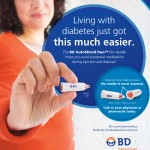
Learn more about BD AutoShield Duo? Pen Needles from http://BD.com.
The post BD AutoShield Duo? Pen Needle appeared first on Summer 2015 Issue | CDiabetes Online Magazine.
]]>
Learn more about BD AutoShield Duo Pen Needles from http://BD.com.
Pen Needles from http://BD.com.
The post BD AutoShield Duo? Pen Needle appeared first on Summer 2015 Issue | CDiabetes Online Magazine.
]]>
Nuts, berries and oils seem to be in the news a lot lately, thanks to the health benefits that they provide. Here is a quick review of each of those foods, along with some new ways they can help your diabetes control. Nuts Walnuts, almonds, hazelnuts and most other types of nuts are great for your heart. They help lower LDL (bad) cholesterol levels, prevent harmful heart rhythms from forming and contain L-arginine, which can help artery walls “relax.” That can help prevent clogged arteries, chest pain and possibly ?heart disease. What’s new? Nuts to the rescue. A recent Canadian study found that nuts not only help improve cholesterol levels, they can also help improve blood glucose levels. If you have type 2 diabetes, you know that if you eat too many carbohydrate-rich foods— pasta, rice, bread, cookies, potatoes, corn, peas, milk, fruit or fruit juice—your blood glucose will go too high. In that study, researchers mixed unsalted almonds, peanuts, cashews, macadamia nuts, pistachios, hazelnuts, pecans and walnuts together. The subjects, who ate 2 ounces of the nut mixture each day in place of some of their carbohydrates, enjoyed a nice drop in their A1C. The A1C is a blood test that tells you how well your diabetes has been controlled for the past three months. People with diabetes have a lower risk of complications if they keep their A1C level below 7 percent. Note: While eating more nuts can be helpful, don’t overdo it. Nuts are high in fat and calories and can cause you to gain weight if you eat too many of them. Nuts, berries and oils can help you better manage your diabetes and lower your risk of health problems. Reap their benefits by making them a regular part of your eating plan. Berries Berries, such as straw-berries, blueberries, raspberries and cranberries, are rich in antioxidants, substances that fight damage caused by toxic byproducts (free radicals). Some of these byproducts come from natural cell processes in the body, while others come from environmental sources, such as cigarette smoke, pesticides and sunlight. What’s new? If you have type 2 diabetes and eat an antioxidant-rich diet, you may find it easier to keep your blood glucose level in a healthy range. That’s because the antioxidants can improve your body’s response to insulin. Experts in Italy who observed that benefit also believe that an antioxidant-rich diet can also help metformin, a common diabetes medicine, work better in the body. They suggest that people with diabetes eat five servings of fruits and vegetables daily to help improve their insulin levels. In addition to berries, carrots, capers, tomatoes, orange juice and tea are also good sources of antioxidants. Note: Fruits and fruit juices will raise your blood glucose level if eaten in excess. If you add them to your diet, count the carbs and check your blood glucose regularly. Adjust your intake of fruit and fruit juices, as needed, based on your blood ?glucose response. Oils There are four types of fats: two that harm and two that help. The harmful ones are saturated fats and trans fats. Saturated fats, found, for example, in red meat and high-fat dairy products, raise your risk of getting heart disease and type 2 diabetes. Trans fats are often found in stick margarines, shortenings and baked goods. A quick glance at a food’s Nutrition Facts label will tell you if a product contains that type of fat. Trans fats should be limited, as they raise the body’s LDL cholesterol level and increase the risk of heart disease. Try to choose foods with 0 grams of trans fat per serving. Polyunsaturated and mono-unsaturated oils are the healthy oils. They are found in nuts, fish and vegetable oils, such as olive, safflower, canola and sunflower oils. They don’t seem to raise LDL cholesterol and may even help bring it down. When you cook at home or dress your salads, use these healthier oils. What’s new? Fish oils are great for your heart, but did you know that they can also help keep your mouth healthy? People with diabetes have a higher risk of gum disease, which can make it harder for them to control their blood glucose level. Fish oils, found in salmon, sardines, mackerel, swordfish and other fatty fish, may help prevent gum disease. The oils that seemed to offer the most help are the omega-3 fatty acids DHA and EPA. Experts don’t know exactly how much fish will help, but they suggest that people who have diabetes eat fatty fish at least twice ?a week. Note: Be sure to limit the amount of oil you use. All oils are high in fat and calories and may lead to weight gain if you use ?too much. By Johanna Burani MS, RD, CDE
The post Are You Nuts About Nuts, Berries and Oils? appeared first on Summer 2015 Issue | CDiabetes Online Magazine.
]]>
Nuts, berries and oils seem to be in the news a lot lately, thanks to the health benefits that they provide. Here is a quick review of each of those foods, along with some new ways they can help your diabetes control.
Nuts
Walnuts, almonds, hazelnuts and most other types of nuts are great for your heart. They help lower LDL (bad) cholesterol levels, prevent harmful heart rhythms from forming and contain L-arginine, which can help artery walls “relax.” That can help prevent clogged arteries, chest pain and possibly ?heart disease.
What’s new?
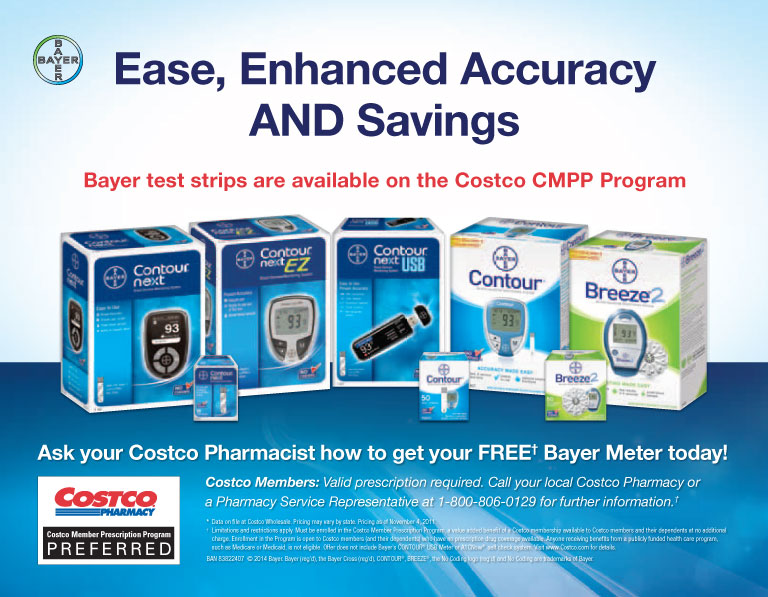 Nuts to the rescue. A recent Canadian study found that nuts not only help improve cholesterol levels, they can also help improve blood glucose levels. If you have type 2 diabetes, you know that if you eat too many carbohydrate-rich foods— pasta, rice, bread, cookies, potatoes, corn, peas, milk, fruit or fruit juice—your blood glucose will go too high.
Nuts to the rescue. A recent Canadian study found that nuts not only help improve cholesterol levels, they can also help improve blood glucose levels. If you have type 2 diabetes, you know that if you eat too many carbohydrate-rich foods— pasta, rice, bread, cookies, potatoes, corn, peas, milk, fruit or fruit juice—your blood glucose will go too high.
In that study, researchers mixed unsalted almonds, peanuts, cashews, macadamia nuts, pistachios, hazelnuts, pecans and walnuts together. The subjects, who ate 2 ounces of the nut mixture each day in place of some of their carbohydrates, enjoyed a nice drop in their A1C. The A1C is a blood test that tells you how well your diabetes has been controlled for the past three months. People with diabetes have a lower risk of complications if they keep their A1C level below 7 percent.
Note: While eating more nuts can be helpful, don’t overdo it. Nuts are high in fat and calories and can cause you to gain weight if you eat too many of them.
Nuts, berries and oils can help you better manage your diabetes and lower your risk of health problems. Reap their benefits by making them a regular part of your eating plan.

Berries
Berries, such as straw-berries, blueberries, raspberries and cranberries, are rich in antioxidants, substances that fight damage caused by toxic byproducts (free radicals). Some of these byproducts come from natural cell processes in the body, while others come from environmental sources, such as cigarette smoke, pesticides and sunlight.
What’s new?
If you have type 2 diabetes and eat an antioxidant-rich diet, you may find it easier to keep your blood glucose level in a healthy range. That’s because the antioxidants can improve your body’s response to insulin. Experts in Italy who observed that benefit also believe that an antioxidant-rich diet can also help metformin, a common diabetes medicine, work better in the body. They suggest that people with diabetes eat five servings of fruits and vegetables daily to help improve their insulin levels. In addition to berries, carrots, capers, tomatoes, orange juice and tea are also good sources of antioxidants.
Note: Fruits and fruit juices will raise your blood glucose level if eaten in excess. If you add them to your diet, count the carbs and check your blood glucose regularly. Adjust your intake of fruit and fruit juices, as needed, based on your blood ?glucose response.

Oils
There are four types of fats: two that harm and two that help. The harmful ones are saturated fats and trans fats. Saturated fats, found, for example, in red meat and high-fat dairy products, raise your risk of getting heart disease and type 2 diabetes. Trans fats are often found in stick margarines, shortenings and baked goods. A quick glance at a food’s Nutrition Facts label will tell you if a product contains that type of fat. Trans fats should be limited, as they raise the body’s LDL cholesterol level and increase the risk of heart disease. Try to choose foods with 0 grams of trans fat per serving.
Polyunsaturated and mono-unsaturated oils are the healthy oils. They are found in nuts, fish and vegetable oils, such as olive, safflower, canola and sunflower oils. They don’t seem to raise LDL cholesterol and may even help bring it down. When you cook at home or dress your salads, use these healthier oils.
What’s new?
Fish oils are great for your heart, but did you know that they can also help keep your mouth healthy? People with diabetes have a higher risk of gum disease, which can make it harder for them to control their blood glucose level. Fish oils, found in salmon, sardines, mackerel, swordfish and other fatty fish, may help prevent gum disease. The oils that seemed to offer the most help are the omega-3 fatty acids DHA and EPA. Experts don’t know exactly how much fish will help, but they suggest that people who have diabetes eat fatty fish at least twice ?a week.
Note: Be sure to limit the amount of oil you use. All oils are high in fat and calories and may lead to weight gain if you use ?too much.
By Johanna Burani MS, RD, CDE
The post Are You Nuts About Nuts, Berries and Oils? appeared first on Summer 2015 Issue | CDiabetes Online Magazine.
]]>
> Available at your local Costco warehouse. Not available for purchase on Costco.com.
The post ACCU-CHEK? FastClix Lancing Device appeared first on Summer 2015 Issue | CDiabetes Online Magazine.
]]>
Available at your local Costco warehouse.
Not available for purchase on Costco.com.
The post ACCU-CHEK? FastClix Lancing Device appeared first on Summer 2015 Issue | CDiabetes Online Magazine.
]]>
Many people with diabetes do not want to start insulin or other injected diabetes medications because they have many fears. Some people fear needles, injection pain or worry about taking a shot. Some people have concerns about the safety or convenience of diabetes injections. Some people even fear that starting injected medications is the “end of the road”. Your community pharmacist can answer your questions about injected diabetes medications and can help you make the right choices to help you achieve your blood glucose goals. We have made great strides in treating diabetes over the last decade. One of the big changes is that insulin and other injectable medications are being prescribed more often and much earlier to improve health. They work very well to manage blood glucose, but they do require an injection. Luckily, most of these medications are now available in pen devices and some manufacturers are continuing to introduce newer, innovative pen needles. The BD AutoShield Duo? Pen Needle is a pen needle for patients who inject diabetes medications at home that may?appeal to people who have fears or concerns about injecting themselves. This pen needle has been used by healthcare?professionals in hospitals for years. The BD AutoShield Duo? Pen Needle has shields on both the front and back of the needle which help avoid accidental needle sticks before and after injecting. The shields also may help make the injection process easier for patients that are anxious about injections because the needle is concealed during the entire process. The BD AutoShield Duo? Pen Needle is also shorter and thinner than many older needles. Some people have been told that they should use longer needles because they are heavy or have thicker skin. But, the latest research shows that new, shorter needles are just as effective as longer needles used in the past and can be used in almost everyone, regardless of sex, weight, or skin thickness1. This is important because longer needles tend to be more painful. And, more importantly, longer needles can accidentally enter into muscle which can lead to lots of changes?in blood sugar levels and may increase pain. Shorter needles are safer and less painful because they enter into the fat tissue right under the skin. The BD AutoShield Duo? Pen Needle also offers some conveniences. It is easier to handle than standard pen needles?which may benefit people with arthritis or reduced dexterity. The short needle length means that you can inject without pinching up your skin,*2 there’s no inner needle shield to remove and the needle does not need to be re-capped to be removed from the pen. This means two less steps in the injection process! If your doctor recommends insulin or another injectable medication for you, ask your pharmacist about the BD AutoShield Duo? Pen Needle. It fits on all leading diabetes pen devices in the U.S. and is covered by most insurance plans. #¥Your pharmacist can help you decide whether it is the right pen needle for you. # Compatible with all leading insulin and GLP-1 pens in the US as of May 2014, ISO-compliant. ¥ Co-pays and preferred status vary by plan. * Patients ages 2-6, those who are extremely lean or with loose skin may require a pinch-up. If using pinch-up: Do not place fingers less than 1 inch (2.5cm) apart. Do not insert the penneedle at an angle towards your fingers. 1. Hirsch et al. Comparative glycemic control, safety and patient ratings. 2.Frid, et al. Diabetes and Metabolism, 2010 Jennifer Trujillo, PharmD, BCPS, CDE | Associate Professor This article is brought to you by?
The post A Diabetes Pen Needle That Helps Avoid Accidental Needle Sticks appeared first on Summer 2015 Issue | CDiabetes Online Magazine.
]]>
Many people with diabetes do not want to start insulin or other injected diabetes medications because they have many fears. Some people fear needles, injection pain or worry about taking a shot. Some people have concerns about the safety or convenience of diabetes injections. Some people even fear that starting injected medications is the “end of the road”. Your community pharmacist can answer your questions about injected diabetes medications and can help you make the right choices to help you achieve your blood glucose goals.
We have made great strides in treating diabetes over the last decade. One of the big changes is that insulin and other injectable medications are being prescribed more often and much earlier to improve health. They work very well to manage blood glucose, but they do require an injection. Luckily, most of these medications are now available in pen devices and some manufacturers are continuing to introduce newer, innovative pen needles.
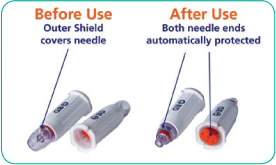 The BD AutoShield Duo
The BD AutoShield Duo Pen Needle is a pen needle for patients who inject diabetes medications at home that may?appeal to people who have fears or concerns about injecting themselves. This pen needle has been used by healthcare?professionals in hospitals for years. The BD AutoShield Duo
Pen Needle is a pen needle for patients who inject diabetes medications at home that may?appeal to people who have fears or concerns about injecting themselves. This pen needle has been used by healthcare?professionals in hospitals for years. The BD AutoShield Duo Pen Needle has shields on both the front and back of the needle which help avoid accidental needle sticks before and after injecting. The shields also may help make the injection process easier for patients that are anxious about injections because the needle is concealed during the entire process.
Pen Needle has shields on both the front and back of the needle which help avoid accidental needle sticks before and after injecting. The shields also may help make the injection process easier for patients that are anxious about injections because the needle is concealed during the entire process.
The BD AutoShield Duo Pen Needle is also shorter and thinner than many older needles. Some people have been told that they should use longer needles because they are heavy or have thicker skin. But, the latest research shows that new, shorter needles are just as effective as longer needles used in the past and can be used in almost everyone, regardless of sex, weight, or skin thickness1. This is important because longer needles tend to be more painful. And, more importantly, longer needles can accidentally enter into muscle which can lead to lots of changes?in blood sugar levels and may increase pain. Shorter needles are safer and less painful because they enter into the fat tissue right under the skin.
Pen Needle is also shorter and thinner than many older needles. Some people have been told that they should use longer needles because they are heavy or have thicker skin. But, the latest research shows that new, shorter needles are just as effective as longer needles used in the past and can be used in almost everyone, regardless of sex, weight, or skin thickness1. This is important because longer needles tend to be more painful. And, more importantly, longer needles can accidentally enter into muscle which can lead to lots of changes?in blood sugar levels and may increase pain. Shorter needles are safer and less painful because they enter into the fat tissue right under the skin.
The BD AutoShield Duo Pen Needle also offers some conveniences. It is easier to handle than standard pen needles?which may benefit people with arthritis or reduced dexterity. The short needle length means that you can inject without pinching up your skin,*2 there’s no inner needle shield to remove and the needle does not need to be re-capped to be removed from the pen. This means two less steps in the injection process!
Pen Needle also offers some conveniences. It is easier to handle than standard pen needles?which may benefit people with arthritis or reduced dexterity. The short needle length means that you can inject without pinching up your skin,*2 there’s no inner needle shield to remove and the needle does not need to be re-capped to be removed from the pen. This means two less steps in the injection process!
If your doctor recommends insulin or another injectable medication for you, ask your pharmacist about the BD AutoShield Duo Pen Needle. It fits on all leading diabetes pen devices in the U.S. and is covered by most insurance plans. #¥Your pharmacist can help you decide whether it is the right pen needle for you.
Pen Needle. It fits on all leading diabetes pen devices in the U.S. and is covered by most insurance plans. #¥Your pharmacist can help you decide whether it is the right pen needle for you.
# Compatible with all leading insulin and GLP-1 pens in the US as of May 2014, ISO-compliant.
¥ Co-pays and preferred status vary by plan.
* Patients ages 2-6, those who are extremely lean or with loose skin may require a pinch-up.
If using pinch-up: Do not place fingers less than 1 inch (2.5cm) apart. Do not insert the penneedle at
an angle towards your fingers.
1. Hirsch et al. Comparative glycemic control, safety and patient ratings.
2.Frid, et al. Diabetes and Metabolism, 2010
Jennifer Trujillo, PharmD, BCPS, CDE | Associate Professor
This article is brought to you by?![]()
The post A Diabetes Pen Needle That Helps Avoid Accidental Needle Sticks appeared first on Summer 2015 Issue | CDiabetes Online Magazine.
]]>
The post Kirkland Signature? Quit2? 2 mg. Gum appeared first on Summer 2015 Issue | CDiabetes Online Magazine.
]]>
The post Kirkland Signature? Quit2? 2 mg. Gum appeared first on Summer 2015 Issue | CDiabetes Online Magazine.
]]>
Read on for answers to some common questions asked by people with diabetes. ?Why is diabetes so ?common today? People are getting type 2 diabetes at younger ages—even children. No one really knows why, but part of the problem is that as a country we are heavier and less physically active than ever before. ?What is prediabetes? If you have prediabetes, your blood glucose levels are higher than normal but not quite high enough to be diagnosed with diabetes. Prediabetes needs to be taken seriously. People with prediabetes are at high risk for heart disease and type 2 diabetes. Is type 2 more serious ?than type 1 diabetes? That depends on what is meant by more serious. It is true that all people with type 1 diabetes need to take insulin, so type 2 may seem easier to manage. Although many people with type 2 diabetes can manage their diabetes with healthy eating, being active and taking oral medicines, many also take insulin. Both types of diabetes, if not managed, can damage many parts of the body, such as the heart, blood vessels, eyes and kidneys. If nobody in my family has diabetes, why did ?I get it? No one really knows for sure. What we do know is that the risk for diabetes is related to both your genes and your environment, which includes lifestyle. It also could be that one of your family members had diabetes in the days before it was diagnosed as easily, so they may not? have known. Or it may be that the person who passed down the risk to you died of something else before he or she got diabetes. But by helping your children and grandchildren stay at a healthy weight and be active, you may be both the first and the last person with diabetes in your family. Why does my treatment ?for type 2 diabetes ?keep changing? There are two reasons. One is that as more is learned about diabetes and new medicines are discovered, your healthcare provider may suggest a new treatment for you. The other reason is that over time, your body makes less and less insulin. You continue to make some insulin but not enough to keep your blood glucose in the target range. As you make less insulin, your body needs more help to keep your blood glucose where it needs to be. So it is common to add diabetes pills, insulin or other types of injectable medicines as time goes by. This does not mean that you have failed to manage your diabetes well. It just means that your treatment needs to change to keep up with your needs. ?What can I do to keep weight off once I lose it? It is true that it is harder to keep weight off than it is to lose it. When you cut back on calories, your body may respond by slowing down your metabolism so that you use your calories better. This is called the “set-point theory” and it helped to keep people from starving years ago at times when food was more scarce. This ?also means that people who diet ?to reach a certain weight will need fewer calories to maintain that weight than someone who has always been at the very same weight.?Although most of us think that once we lose weight, we don’t have to think about what we eat anymore; that’s not true. Keeping weight off takes work, as well. There are some things you can do that will help. Because you most likely have several types of questions, it is a good idea to add them to a list as you think of them. Your doctor, nurse, dietitian or Costco pharmacist are all good sources of? health information. By Martha Funnell MS, RN, CDE
The post Diabetes Q&A appeared first on Summer 2015 Issue | CDiabetes Online Magazine.
]]>
Read on for answers to some common questions asked by people with diabetes.
Q?Why is diabetes so ?common today?
APeople are getting type 2 diabetes at younger ages—even children. No one really knows why, but part of the problem is that as a country we are heavier and less physically active than ever before.
Q?What is prediabetes?
AIf you have prediabetes, your blood glucose levels are higher than normal but not quite high enough to be diagnosed with diabetes. Prediabetes needs to be taken seriously. People with prediabetes are at high risk for heart disease and type 2 diabetes.
Q Is type 2 more serious ?than type 1 diabetes?
AThat depends on what is meant by more serious. It is true that all people with type 1 diabetes need to take insulin, so type 2 may seem easier to manage. Although many people with type 2 diabetes can manage their diabetes with healthy eating, being active and taking oral medicines, many also take insulin. Both types of diabetes, if not managed, can damage many parts of the body, such as the heart, blood vessels, eyes and kidneys.
Q If nobody in my family has diabetes, why did ?I get it?
ANo one really knows for sure. What we do know is that the risk for diabetes is related to both your genes and your environment, which includes lifestyle. It also could be that one of your family members had diabetes in the days before it was diagnosed as easily, so they may not? have known. Or it may be that the person who passed down the risk to you died of something else before he or she got diabetes. But by helping your children and grandchildren stay at a healthy weight and be active, you may be both the first and the last person with diabetes in your family.
Q Why does my treatment ?for type 2 diabetes ?keep changing?
AThere are two reasons. One is that as more is learned about diabetes and new medicines are discovered, your healthcare provider may suggest a new treatment for you. The other reason is that over time, your body makes less and less insulin. You continue to make some insulin but not enough to keep your blood glucose in the target range. As you make less insulin, your body needs more help to keep your blood glucose where it needs to be. So it is common to add diabetes pills, insulin or other types of injectable medicines as time goes by. This does not mean that you have failed to manage your diabetes well. It just means that your treatment needs to change to keep up with your needs.
Q?What can I do to keep weight off once I lose it?
AIt is true that it is harder to keep weight off than it is to lose it. When you cut back on calories, your body may respond by slowing down your metabolism so that you use your calories better. This is called the “set-point theory” and it helped to keep people from starving years ago at times when food was more scarce. This ?also means that people who diet ?to reach a certain weight will need fewer calories to maintain that weight than someone who has always been at the very same weight.?Although most of us think that once we lose weight, we don’t have to think about what we eat anymore; that’s not true. Keeping weight off takes work, as well. There are some things you can do that will help.
Because you most likely have several types of questions, it is a good idea to add them to a list as you think of them. Your doctor, nurse, dietitian or Costco pharmacist are all good sources of? health information.
By Martha Funnell MS, RN, CDE
The post Diabetes Q&A appeared first on Summer 2015 Issue | CDiabetes Online Magazine.
]]>
Robbie Almeida, a Costco pharmacist in Ann Arbor, Michigan, finally?quit smoking?after 15 years of advising her customers to do the same. This is how she did it. As a pharmacist, Robbie knew about the health benefits of vitamins and other supplements. She also knew that certain vitamins and supplements would help her?quit smoking. “I take a multivitamin. I take triglycerides. I take flaxseed oil, probiotics and CoQ10. And I take a calcium pill.” Robbie tells her customers at Costco pharmacy that wanting to?quit?is the first big step. For Robbie, once she made that decision, the rest followed easily. “Honestly, I just did it cold turkey. I remember I had my last cigarette at my friend’s house, and I was done. I stayed away from smoking areas so I wasn’t tempted or craving or anything like that. I wanted to?quit, so that’s how I did it. Now if I smell cigarette smoke it makes me ill. I don’t like it at all, and I think, ‘Oh, that was really gross.’ How could I have been doing that for so long?” Most people won’t be able to?quit?cold turkey like Robbie, but making that decision is an important first step. Even when she was smoking, Robbie knew that she was harming her health. Like so many people, she started smoking as a teenager. She thought “everyone” was doing it, and it seemed so cool. Then, as a pharmacist, she had to talk to her customers about the risks of smoking and advise them to?quit. It was hard to hear that smoking raises your risk of heart disease and diabetes almost every day. “The health benefits of it all–how does it make sense to put something foreign into our systems? My kids are nine and eight. They don’t remember when I was still a smoker; it’s been over 10 years. But I tell them about it so that they won’t start like I did. I tell them that it doesn’t make any sense. You’re putting something in your body that doesn’t belong there. “There’s disease. There’s pre-mature death. And the sooner you?quit, the sooner your lungs can start to recover. Back when I was smoking, I had pleurisy in my lungs, like there was an infection in the lining. Right now I feel that my lungs are probably close to 100% healthy.” Robbie?quit?soon after finishing pharmacy school. She admits that she smoked through school because of the stress. But learning about lung cancer, heart disease, strokes–she realized that it was time. She also saw what it was doing to her patients. “We measure patients’ lung capacity, and every year or so and I have to talk to the smokers about the benefits of?stopping.?You can tell right away when they blow into the tube and they can’t breathe that they have had decades of smoking. It’s really bad. And then of course they have to rely on drugs, like inhalers, and everything else that goes along with smoking-related diseases, and all that is very costly. So, it doesn’t make any sense. “I’ve had patients come to me with nicotine gum and ask me whether it works or not. I tell them that they have to be willing to quit, because if they’re not, nothing will really work. I haven’t been monitoring exactly how many patches or over-the-counter products people are buying now thanks to their New Year’s resolutions, but more people are coming to the pharmacy and talking to me about?quitting. “I believe in determination. In my mind I was done smoking, so that’s why I was able toquit. It’s up to each individual to realize the benefits of?quitting?and to decide how to do it. A lot of people use the gum or the patch. That’s fine. With the gum, heavy smokers can start off with a higher dosage to decrease the craving, and then gradually decrease the dose as they start smoking less. They taper down until they get to the lower dose and then, hopefully, the cravings won’t be there and they will have?quit.” Family history also plays a role. Robbie’s father smoked until she was born. Like Robbie, he?stopped?before his children saw him smoking. But Robbie’s grandfather smoked and great grandmother also smoked. Robbie’s grandfather died of complications from smoking; most likely, it aggravated his heart disease. Robbie has been taking calcium ever since she finished school to avoid osteoporosis. She wants to keep strong bones so that she’ll be healthy for his children “A lot of older smokers don’t think like that. They are pretty much addicted and they can’t stop. My children are always on my mind. I have to be healthy for them, so everything that I’m doing is so that I can be with them longer.” By?Jonathan Jarashow
The post Quitting Smoking: A Costco pharmacist’s story appeared first on Summer 2015 Issue | CDiabetes Online Magazine.
]]>
 Robbie Almeida, a Costco pharmacist in Ann Arbor, Michigan, finally?quit smoking?after 15 years of advising her customers to do the same. This is how she did it.
Robbie Almeida, a Costco pharmacist in Ann Arbor, Michigan, finally?quit smoking?after 15 years of advising her customers to do the same. This is how she did it.
As a pharmacist, Robbie knew about the health benefits of vitamins and other supplements. She also knew that certain vitamins and supplements would help her?quit smoking.
“I take a multivitamin. I take triglycerides. I take flaxseed oil, probiotics and CoQ10. And I take a calcium pill.”
Robbie tells her customers at Costco pharmacy that wanting to?quit?is the first big step. For Robbie, once she made that decision, the rest followed easily.
“Honestly, I just did it cold turkey. I remember I had my last cigarette at my friend’s house, and I was done. I stayed away from smoking areas so I wasn’t tempted or craving or anything like that. I wanted to?quit, so that’s how I did it. Now if I smell cigarette smoke it makes me ill. I don’t like it at all, and I think, ‘Oh, that was really gross.’ How could I have been doing that for so long?”
Most people won’t be able to?quit?cold turkey like Robbie, but making that decision is an important first step.
Even when she was smoking, Robbie knew that she was harming her health. Like so many people, she started smoking as a teenager. She thought “everyone” was doing it, and it seemed so cool. Then, as a pharmacist, she had to talk to her customers about the risks of smoking and advise them to?quit. It was hard to hear that smoking raises your risk of heart disease and diabetes almost every day.
“The health benefits of it all–how does it make sense to put something foreign into our systems? My kids are nine and eight. They don’t remember when I was still a smoker; it’s been over 10 years. But I tell them about it so that they won’t start like I did. I tell them that it doesn’t make any sense. You’re putting something in your body that doesn’t belong there.
“There’s disease. There’s pre-mature death. And the sooner you?quit, the sooner your lungs can start to recover. Back when I was smoking, I had pleurisy in my lungs, like there was an infection in the lining. Right now I feel that my lungs are probably close to 100% healthy.”
Robbie?quit?soon after finishing pharmacy school. She admits that she smoked through school because of the stress. But learning about lung cancer, heart disease, strokes–she realized that it was time. She also saw what it was doing to her patients.
“We measure patients’ lung capacity, and every year or so and I have to talk to the smokers about the benefits of?stopping.?You can tell right away when they blow into the tube and they can’t breathe that they have had decades of smoking. It’s really bad. And then of course they have to rely on drugs, like inhalers, and everything else that goes along with smoking-related diseases, and all that is very costly. So, it doesn’t make any sense.
“I’ve had patients come to me with nicotine gum and ask me whether it works or not. I tell them that they have to be willing to quit, because if they’re not, nothing will really work. I haven’t been monitoring exactly how many patches or over-the-counter products people are buying now thanks to their New Year’s resolutions, but more people are coming to the pharmacy and talking to me about?quitting.
“I believe in determination. In my mind I was done smoking, so that’s why I was able toquit. It’s up to each individual to realize the benefits of?quitting?and to decide how to do it. A lot of people use the gum or the patch. That’s fine. With the gum, heavy smokers can start off with a higher dosage to decrease the craving, and then gradually decrease the dose as they start smoking less. They taper down until they get to the lower dose and then, hopefully, the cravings won’t be there and they will have?quit.”
Family history also plays a role. Robbie’s father smoked until she was born. Like Robbie, he?stopped?before his children saw him smoking. But Robbie’s grandfather smoked and great grandmother also smoked. Robbie’s grandfather died of complications from smoking; most likely, it aggravated his heart disease. Robbie has been taking calcium ever since she finished school to avoid osteoporosis. She wants to keep strong bones so that she’ll be healthy for his children
“A lot of older smokers don’t think like that. They are pretty much addicted and they can’t stop. My children are always on my mind. I have to be healthy for them, so everything that I’m doing is so that I can be with them longer.”
By?Jonathan Jarashow
The post Quitting Smoking: A Costco pharmacist’s story appeared first on Summer 2015 Issue | CDiabetes Online Magazine.
]]>
A spare tire comes in handy if you have a flat, but who wants one around their middle? Too much belly fat is linked with a number of health problems. Here’s how to tell if you need to trim your waistline and, if so, what you can do. Belly fat ?and your body The fat that surrounds the mid-part of your body tends to wrap itself around your internal organs, too. Belly fat is also called visceral fat, and unlike the fat that lies right under your skin, it’s a more harmful kind of fat. Why too much belly fat can be harmful Studies show that increased belly fat may lead to certain health problems, such as: heart disease type 2 diabetes fatty liver disease breast cancer depression Belly fat can cause areas of your body to become inflamed, which may cause many of the health problems listed above. Belly fat is linked with high bad cholesterol (LDL) and low good cholesterol (HDL). ?It’s also linked to insulin resistance, which means your body starts to ignore the insulin you produce. Insulin resistance can lead to type 2 diabetes. If you already have diabetes, insulin resistance makes it harder for the insulin you make or inject to work well. How to tell One look in the mirror can indicate if you have too much belly fat. Here are some tell-tale signs: Are you shaped like an apple or a pear? If you carry your excess weight around your middle, you are shaped like an apple. If your extra weight is stored below your waist, in the abdomen and buttocks area, you are more like a pear. Those who fall into the apple group have too much belly fat. Is your waist size larger than your hip size? If you’re a woman and your waist size is more than 35 inches around, or if you’re a man and your waist size is more than 40 inches around, you may have too much belly fat. To measure your waist, take a tape measure and wrap it around your waist so that it crosses your navel. Keep the tape measure above your hip bones and don’t suck in your stomach. Or, ask your healthcare provider to measure your waist for you. Is your body mass index (BMI) too high? Many people with a high BMI tend to have too much belly fat. You can figure out your BMI by using a BMI calculator on the Internet, or your provider can calculate it for you. Your BMI tells you where your weight stands in relation to your height. A BMI between 25 and 29.9 puts you in the overweight group, and a BMI above 30 indicates obesity for most people. 10 Ways to Slim Down and Lose That Belly Fat You can get rid of some of your belly fat if you make a few of these lifestyle changes: Get moving. Moving your body is healthy for so many reasons—including shrinking belly fat.? Studies show that people who don’t move see an increase in their belly fat, while those who are active each day lose fat around their middle. Try to be active for at least 30 minutes every day. All activity counts, even as gardening, yard work, housecleaning and walking around the mall. Squeeze in some strength-building exercises a couple of days a week. For example, use small hand weights or climb stairs instead of taking the elevator. Exercises that focus on certain areas, such as sit-ups, can help tighten and tone your muscles, but they won’t get rid of the fat. Eat more whole grains. People who eat more whole grain foods, like whole wheat bread, whole grain pasta and brown rice, tend to have less belly fat than people who eat more refined or white foods. Cut calories. If you weigh too much, slow and steady weight loss can help you lose belly fat.? Try to cut back on portion sizes, as well as high-calorie, fatty foods like fried foods, whole milk, butter and snack foods. Meet with a dietitian to help make an eating plan to lose weight and manage your diabetes at the same time. Be less stressed. It’s easier said than done, but the more stress you have in your life, the bigger your waist may become. That’s because stress tends to raise a hormone called cortisol and this moves fat from other areas of the body to your midsection.? Physical activity, yoga, deep breathing, massage and meditation are great ways to chill out. Stop smoking. You probably know that smoking increases the risk for lung disease, lung cancer and heart disease, but you may not know that smoking can also build up belly fat and lead to insulin resistance. If you smoke, this is another good reason to quit. Bump up your soluble fiber. Soluble fiber is a type of fiber that can help lower cholesterol, blood glucose and even belly fat. Research shows that for every 10 grams of soluble fiber people eat, their belly fat will drop by about 4 percent over five years. Sources of soluble fiber include oatmeal, oat bran, beans, apples, citrus fruits, broccoli and carrots. Get the right amount of sleep. Too little or too much sleep can lead to a tubby tummy. The right amount of sleep for most adults is between six and eight hours each night. Choose healthy fats. Not all fats are bad, and you need good fat for good health.? Go for heart-healthy fats, like olive oil, canola oil and safflower oil. Include nuts, seeds and avocados in your eating plan, too. But watch your portions as all fats, even good ones, are high in calories. Enjoy green tea. If you like tea, try green tea. Ingredients found in green tea may help shrink your waist down to a better size. Avoid high fructose corn syrup. In animal studies, rats that ate high-fructose corn syrup increased their belly fat. Try to stay away from...
The post Belly Fat: How to Lose That Spare Tire appeared first on Summer 2015 Issue | CDiabetes Online Magazine.
]]>
A spare tire comes in handy if you have a flat, but who wants one around their middle? Too much belly fat is linked with a number of health problems. Here’s how to tell if you need to trim your waistline and, if so, what you can do.
Belly fat ?and your body
The fat that surrounds the mid-part of your body tends to wrap itself around your internal organs, too. Belly fat is also called visceral fat, and unlike the fat that lies right under your skin, it’s a more harmful kind of fat.
Why too much belly fat can be harmful
Studies show that increased belly fat may lead to certain health problems, such as:
- heart disease
- type 2 diabetes
- fatty liver disease
- breast cancer
- depression
Belly fat can cause areas of your body to become inflamed, which may cause many of the health problems listed above. Belly fat is linked with high bad cholesterol (LDL) and low good cholesterol (HDL). ?It’s also linked to insulin resistance, which means your body starts to ignore the insulin you produce. Insulin resistance can lead to type 2 diabetes. If you already have diabetes, insulin resistance makes it harder for the insulin you make or inject to work well.
How to tell
One look in the mirror can indicate if you have too much belly fat. Here are some tell-tale signs:
Are you shaped like an apple or a pear? If you carry your excess weight around your middle, you are shaped like an apple. If your extra weight is stored below your waist, in the abdomen and buttocks area, you are more like a pear. Those who fall into the apple group have too much belly fat.
Is your waist size larger than your hip size? If you’re a woman and your waist size is more than 35 inches around, or if you’re a man and your waist size is more than 40 inches around, you may have too much belly fat. To measure your waist, take a tape measure and wrap it around your waist so that it crosses your navel. Keep the tape measure above your hip bones and don’t suck in your stomach. Or, ask your healthcare provider to measure your waist for you.
Is your body mass index (BMI) too high? Many people with a high BMI tend to have too much belly fat. You can figure out your BMI by using a BMI calculator on the Internet, or your provider can calculate it for you.
Your BMI tells you where your weight stands in relation to your height. A BMI between 25 and 29.9 puts you in the overweight group, and a BMI above 30 indicates obesity for most people.
10 Ways to Slim Down and Lose That Belly Fat
You can get rid of some of your belly fat if you make a few of these lifestyle changes:
- Get moving.
Moving your body is healthy for so many reasons—including shrinking belly fat.? Studies show that people who don’t move see an increase in their belly fat, while those who are active each day lose fat around their middle. Try to be active for at least 30 minutes every day. All activity counts, even as gardening, yard work, housecleaning and walking around the mall. Squeeze in some strength-building exercises a couple of days a week. For example, use small hand weights or climb stairs instead of taking the elevator. Exercises that focus on certain areas, such as sit-ups, can help tighten and tone your muscles, but they won’t get rid of the fat.
- Eat more whole grains.
People who eat more whole grain foods, like whole wheat bread, whole grain pasta and brown rice, tend to have less belly fat than people who eat more refined or white foods.
- Cut calories.
If you weigh too much, slow and steady weight loss can help you lose belly fat.? Try to cut back on portion sizes, as well as high-calorie, fatty foods like fried foods, whole milk, butter and snack foods. Meet with a dietitian to help make an eating plan to lose weight and manage your diabetes at the same time.
- Be less stressed.
It’s easier said than done, but the more stress you have in your life, the bigger your waist may become. That’s because stress tends to raise a hormone called cortisol and this moves fat from other areas of the body to your midsection.? Physical activity, yoga, deep breathing, massage and meditation are great ways to chill out.
- Stop smoking.
You probably know that smoking increases the risk for lung disease, lung cancer and heart disease, but you may not know that smoking can also build up belly fat and lead to insulin resistance. If you smoke, this is another good reason to quit.
- Bump up your soluble fiber.
Soluble fiber is a type of fiber that can help lower cholesterol, blood glucose and even belly fat. Research shows that for every 10 grams of soluble fiber people eat, their belly fat will drop by about 4 percent over five years. Sources of soluble fiber include oatmeal, oat bran, beans, apples, citrus fruits, broccoli and carrots.
- Get the right amount of sleep.
Too little or too much sleep can lead to a tubby tummy. The right amount of sleep for most adults is between six and eight hours each night.
- Choose healthy fats.
Not all fats are bad, and you need good fat for good health.? Go for heart-healthy fats, like olive oil, canola oil and safflower oil. Include nuts, seeds and avocados in your eating plan, too. But watch your portions as all fats, even good ones, are high in calories.
- Enjoy green tea.
If you like tea, try green tea. Ingredients found in green tea may help shrink your waist down to a better size.
- Avoid high fructose corn syrup.
In animal studies, rats that ate high-fructose corn syrup increased their belly fat. Try to stay away from drinks, desserts and snack foods with that type of sweetener (look for it on the label).
What Doesn’t Work
Wouldn’t it be great if your extra fat could be sucked away? While liposuction (which does that) is a way to trim those love handles and slim down jiggly thighs, it’s not a smart way to remove belly fat—at least in the long run.? Studies show that belly fat can increase after people have liposuction in their stomach area.? Experts aren’t sure why, but they think that after liposuction fat moves from other parts of the body back into the abdomen.
By Amy Campbell MS, RD, LDN, CDE
The post Belly Fat: How to Lose That Spare Tire appeared first on Summer 2015 Issue | CDiabetes Online Magazine.
]]>
Available at your local Costco Warehouse.
The post Kirkland Signature? OptiFiber appeared first on Summer 2015 Issue | CDiabetes Online Magazine.
]]>
Available at your local Costco Warehouse.
The post Kirkland Signature? OptiFiber appeared first on Summer 2015 Issue | CDiabetes Online Magazine.
]]>
When you start to lose weight, you lose some of your stored fat. That may seem like a good thing to you, but your body doesn’t always agree. We used to think fat just sat in your body and did nothing. But we now know that is not true.
The post The Skinny on Weight Loss appeared first on Summer 2015 Issue | CDiabetes Online Magazine.
]]>
The post The Skinny on Weight Loss appeared first on Summer 2015 Issue | CDiabetes Online Magazine.
]]>
The post Nature Made? Vitamins appeared first on Summer 2015 Issue | CDiabetes Online Magazine.
]]>
The post Nature Made? Vitamins appeared first on Summer 2015 Issue | CDiabetes Online Magazine.
]]>
Many people with diabetes look to natural products and vitamins for added help with their diabetes. And with good reason—some ?of these products can be very helpful. But some can make your diabetes medicines less effective or ?harm you. Before you try any such products, ask these questions: Does this product work? ?Some companies quote stories from people who loved using their product. But these stories are not the best source of information. After all, you only hear from those for whom it worked. Instead, look for a note from a reliable member of the health care community. Doctors, dietitians and pharmacists know how to check products to see if they work. Is the product safe? ?Watch out for products that claim to have the answer or the cure for diabetes. As of today, there is no cure that you can buy in any store or from the Internet. While some of these products may be harmless, they may not work well or may cause problems when you take them with other medicines. Costco carries a line of vitamins and supplements called Kirkland Signature?. These products are guaranteed to be of equal or better quality than name brands and can be one of the many tools you use to help manage your type 2 diabetes. Talk with your health care provider or Costco pharmacist about whether a natural product is safe for you and is a good value for your money. By Janis Roszler MSFT, RD, CDE, LD/N
The post Are Natural Products Right For You? appeared first on Summer 2015 Issue | CDiabetes Online Magazine.
]]>
Many people with diabetes look to natural products and vitamins for added help with their diabetes. And with good reason—some ?of these products can be very helpful. But some can make your diabetes medicines less effective or ?harm you. Before you try any such products, ask these questions:
Q Does this product work?
A?Some companies quote stories from people who loved using their product. But these stories are not the best source of information. After all, you only hear from those for whom it worked. Instead, look for a note from a reliable member of the health care community. Doctors, dietitians and pharmacists know how to check products to see if they work.
Q Is the product safe?
A?Watch out for products that claim to have the answer or the cure for diabetes. As of today, there is no cure that you can buy in any store or from the Internet. While some of these products may be harmless, they may not work well or may cause problems when you take them with other medicines. Costco carries a line of vitamins and supplements called Kirkland Signature . These products are guaranteed to be of equal or better quality than name brands and can be one of the many tools you use to help manage your type 2 diabetes.
. These products are guaranteed to be of equal or better quality than name brands and can be one of the many tools you use to help manage your type 2 diabetes.
Talk with your health care provider or Costco pharmacist about whether a natural product is safe for you and is a good value for your money.
3 Tips For Safe Use
- Read up about the supplements you want to use, discuss with your health care provider before use and think about what you hope to achieve. Keep track of how you feel and decide if it does what ?you expect it to do.
- Start with a single product—do not begin with more than one at a time. Follow the label guidelines. Make a record of the natural products you use, their brand names, ingredients, doses taken and the dates ?you started.
- Report any side effects to your health care provider and stop using any item if you begin to have problems or side effects.
By Janis Roszler MSFT, RD, CDE, LD/N
The post Are Natural Products Right For You? appeared first on Summer 2015 Issue | CDiabetes Online Magazine.
]]>
Has this ever happened to you: You are using ?your meal plan and keeping your blood glucose levels in the target range. Just when you feel you have it all under control, something happens to stress you out. Almost without thinking, you ?reach for ?your favorite comfort food. You feel better for a while, but then your blood glucose levels go up. So now you feel tired, guilty and even more stressed. You can break this stress-eating cycle. Instead of getting down on yourself or thinking there is nothing you can do to change, you can learn to handle stress in a new way. Food ?and Stress There is nothing wrong with eating during times of stress—the problem is what you eat. Most people don’t choose carrots and celery as a way to ease stress. It’s much more likely that you’ll reach for comfort foods that are often high in carbs, fat and calories, such as potato chips, cookies and ice cream. The foods that you find comforting often go back many years, maybe even to childhood. It can be a tough cycle to break, but by learning more about yourself and making a plan, ?you can do it. Did it Help? The first thing to do is to think about why you use food and how well it is working for you. Think back to when you last ate due to stress. Many people find that food is only a short-term solution. It does not really fix the problem or make the stress go away. In fact, you may feel more stressed. ASK YOURSELF Did eating help? Did I feel better or worse? If I felt better,? for how long? Did eating cause additional stress or make it go away? What could I do instead? ? ? ? 7 Tips For Managing Stress Avoid or get rid of what’s causing it. Change your belief about it. Learn ?new ways to deal ?with it. Take a walk. ?Talk with a good listener. ?Write down your feelings. ?Pray ?and/or ?meditate. One idea is to avoid people or things that are stressful as often as you can. It takes time to feel good about saying “No,” but it may help to remember that it is in your best interest. And you will be more help to others if you are in better health. But even if you can’t get rid of or control the things you find stressful, you do have a choice about how you handle it. Make a Plan One of the reasons people eat when they are stressed is that comfort foods are often not part of their daily meal plan. They end up craving those foods and during stressful times, they reach for them because they feel they deserve it. A way to lessen those cravings is to have small portions of comfort foods routinely so they are less of a treat. A dietitian can help you learn how to fit favorite foods into your meal plan. There are lots of tips for handling stress, but it can be hard to remember these ideas when you are in the middle of a tough situation. One thought is to make a plan when you are not stressed. Being ready for stress with a list ?of things you know will work or want to try can make it easier to use these tips when you need them. Think of it ?as reaching for ?your list instead ?of a cookie. Stress is part of life. So having a plan in place just makes sense. It can help you break the stress-eating cycle and help you feel more in charge of your diabetes and your life. By Martha Funnell MS, RN, CDE
The post Break the Stress-Eating Cycle appeared first on Summer 2015 Issue | CDiabetes Online Magazine.
]]>
The post Break the Stress-Eating Cycle appeared first on Summer 2015 Issue | CDiabetes Online Magazine.
]]>
5 Tips to Help Manage Your Medicines Once-a-day medicines can usually be taken anytime. The important thing is to take them at about the same time every day. Some medicines work better when taken in the morning or at night. Ask your healthcare provider what time of day is best for the medicines you are taking. ?Take your medicines at mealtimes whenever possible. ?It’s usually easier to remember. And stick with a regular meal/medicine schedule as much as possible. If your schedule happens to change, ask your healthcare provider about the best way to deal with it. If the label says to take after meals or on a full stomach, take them when you finish eating. Bedtime can mean different things on different days. Choose a time and remember to take your medicines at that time, regardless of when you go to bed. If the label doesn’t say anything about food, you don’t need to be concerned about when you take your medicines—though it is often easier to remember if you take them at mealtimes. Many people do not fully understand what the instructions on their medicine bottles meant. They often take medicines more times per day than needed. Most people find that the more often they have to remember to take their medicines, the easier it is to forget. So what can you do? Ask your COSTCO pharmacist the following questions: Is there a particular time of the day it is best to take this medicine? Do I need to avoid certain foods or drinks with this medicine? Is it safe to drink alcohol with this medicine? What are the side effects? How do I store this medicine? Also, ask your pharmacist to help you make a plan or a calendar that will fit in to your day and help you get the most from your medicine. What does the label on my pill bottle mean? If The Label Says: It Means: Take on an empty stomach Take at least two hours after eating or one hour before you start eating Take before meals Take right before you start eating Take with food and liquid Take during or after your meal Take with meals or at mealtime Take during or after your meal Take every 12 hours Take twice daily, 12 hours apart ?(for example: 7 a.m. and 7 p.m.) Take every eight hours Take three times a day, 8 hours apart (for example: 7 a.m., 3 p.m. and 11 p.m.) By Martha Funnell MS, RN, CDE
The post Making Sense of Meds appeared first on Summer 2015 Issue | CDiabetes Online Magazine.
]]>
The post Making Sense of Meds appeared first on Summer 2015 Issue | CDiabetes Online Magazine.
]]>
Daybreak Scramble Pizza ?
The post Daybreak Scramble Pizza appeared first on Summer 2015 Issue | CDiabetes Online Magazine.
]]>
Daybreak Scramble Pizza

Makes 10 Servings
1 tablespoon margarine
2 cups liquid egg whites
? teaspoon salt
? teaspoon black pepper
1 (10-ounce) package prebaked whole-wheat pizza crust
1-1? cups frozen vegetables (broccoli, spinach, and red bell peppers, or a combination of your favorites), thawed
3/4 cup 75% reduced fat shredded Cheddar cheese
2 frozen turkey sausage patties, thawed and cut into bite-sized pieces
Calories from Fat 35, Total Fat 4 g, Saturated Fat 1.4 g, Trans Fat 0 g, Cholesterol 10 mg, Sodium 400 mg, Potassium 225 mg, Total Carbohydrate 16 g, Dietary Fiber 3 g, Sugars 2 g, Protein 12 g, Phosphorus 135 mg Exchanges: 1 Starch 1 Medium-Fat Meat

1. Preheat oven to 400°F. Coat a 10- x 15-inch baking sheet with cooking spray.
2. In a large skillet, melt margarine over medium heat. Add egg whites, salt, and pepper; scramble and cook until eggs are firm.
3. Spoon scrambled eggs over crust; top evenly with vegetables, cheese, and sausage pieces.
4. Bake 8 to 10 minutes, or until cheese is melted. Slice and serve.
Test Kitchen Tip: If using uncooked turkey sausage, brown it before cutting into bite-sized pieces. Also, when testing this recipe, we used the 75% reduced-fat variety of Cabot Cheddar cheese.
?
The post Daybreak Scramble Pizza appeared first on Summer 2015 Issue | CDiabetes Online Magazine.
]]>
Serves: 6 Cooking time: 30 minutes Preparation time: 5 minutes plus 2 hours soaking Ingredients 1 cup brown Basmati rice 1 tablespoon vegetable oil 1 small onion, chopped 1 garlic clove, minced 4 whole cloves 1?8 teaspoon salt 2 cups chicken broth 1 cinnamon stick 1 teaspoon vegetable oil 1 tablespoon raisins 1 tablespoon blanched slivered?almonds or pine nuts Instructions Soak rice 2 hours to shorten cooking time. Rinse and drain. In a large non-stick?saucepan, heat 1 tablespoon oil and?sauté onion and garlic until tender, 2 to 3?minutes. Add cloves and cook 1 minute. Add rice?and stir to coat. Add salt, broth and the?cinnamon stick. Bring to a boil. Cover, reduce heat and simmer 20 to 25?minutes, until liquid is absorbed. Discard?cinnamon stick. Heat 1 teaspoon oil; add?raisins and almonds and warm. Mix with rice and serve. Per Serving 176 Calories, 0 mg. Cholesterol, 31 g Carbohydrates, 3 g Protein, 41 mg Sodium, 5 g Fat (0.5 g Saturated Fat) Exchanges: 2 starch/bread, 1 fat Recipes adapted from: Light & Easy Diabetes Cuisine written by Betty Marks,?Surrey Books.
The post Spiced Rice Pilaf appeared first on Summer 2015 Issue | CDiabetes Online Magazine.
]]>
Serves: 6
Cooking time: 30 minutes
Preparation time: 5 minutes plus 2 hours soaking
Ingredients
1 cup brown Basmati rice
1 tablespoon vegetable oil
1 small onion, chopped
1 garlic clove, minced
4 whole cloves
1?8 teaspoon salt
2 cups chicken broth
1 cinnamon stick
1 teaspoon vegetable oil
1 tablespoon raisins
1 tablespoon blanched slivered?almonds or pine nuts
Instructions
- Soak rice 2 hours to shorten cooking time.
- Rinse and drain. In a large non-stick?saucepan, heat 1 tablespoon oil and?sauté onion and garlic until tender, 2 to 3?minutes.
- Add cloves and cook 1 minute. Add rice?and stir to coat. Add salt, broth and the?cinnamon stick. Bring to a boil.
- Cover, reduce heat and simmer 20 to 25?minutes, until liquid is absorbed. Discard?cinnamon stick. Heat 1 teaspoon oil; add?raisins and almonds and warm.
- Mix with rice and serve.
Per Serving
176 Calories, 0 mg. Cholesterol,
31 g Carbohydrates, 3 g Protein,
41 mg Sodium, 5 g Fat (0.5 g Saturated Fat)
Exchanges: 2 starch/bread, 1 fat
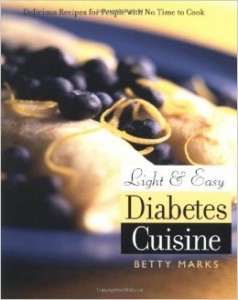
Recipes adapted from:
Light & Easy Diabetes Cuisine
written by Betty Marks,?Surrey Books.
The post Spiced Rice Pilaf appeared first on Summer 2015 Issue | CDiabetes Online Magazine.
]]>
Talking, eating, kissing, dazzling everyone with your intellect. What don’t you need your mouth for? Your confidence can soar when your mouth is healthy. Also, the health of your mouth is an important step in maintaining the health of your body. Where Does a?Healthy Mouth Begin? First, protect your teeth.?Tooth decay is sneaky, so don’t?give it a chance to attack.?A few basics can help keep?it at bay: Eat a balanced diet. Drink water instead of soda?and other sugary drinks. Healthy Oral Care Habits Start Soft. A soft bristle—or electric—toothbrush?is best. Two minutes, twice a day. Fluoride Is Your Friend. Toothpastes like?Colgate Total? can help prevent cavities with?twice-daily brushing. Flossing. Seriously, just do it. It removes plaque from?surfaces between the teeth where your toothbrush?can’t reach. Mouthwash. Make it count. It’s about more than?fresh breath. A rinse with fluoride and/or antibacterial?actives can provide extra protection for teeth?and/or gums. Keep Up with Checkups. See your dentist at least?twice a year.
The post Why Mouth Health Matters appeared first on Summer 2015 Issue | CDiabetes Online Magazine.
]]>
The post Why Mouth Health Matters appeared first on Summer 2015 Issue | CDiabetes Online Magazine.
]]>
Portobellos and Asparagus Makes 4 (?-cup) servings Ingredients 2 teaspoons canola or olive oil 3 cups sliced portobello mushrooms (about 2 large portobellos, stems and black gills removed) 2 tablespoons chopped shallots 3 cups asparagus pieces (1?-inch), from about 1 pound (see note) 1 teaspoon low-sodium soy sauce 3 (?-ounce) slices nitrite-free turkey (or pork) bacon, cooked until crisp, drained well, and crumbled 1 tablespoon grated Parmigiano-Reggiano cheese Directions Note Instead of asparagus, you can substitute 1 (9-ounce) bag (12 cups) fresh spinach. Add to the mushrooms, cover for a few minutes until wilted. Stir well and add remaining ingredients. In a nonstick skillet, heat the oil over medium-high heat. Add the mushrooms and cook for about 3 minutes, or until they just start to soften and release their liquid. Add the shallots and cook for another minute. Add the asparagus and cook for 3 minutes longer, or until the asparagus is just crisp-tender. Drizzle the soy sauce over the veggies and sprinkle with the bacon crumbles and cheese. Toss well and serve hot. NUTRITION INFORMATION?PER SERVING: Calories 60, Total Fat 1 g?(<1 g Saturated), Cholesterol 20 mg, Sodium 110 mg, Carbohydrates 7 g, Sugars 2 g, Fiber 2 g, Protein 6 g Exchanges: Vegetables 1.38, Lean Meat 0.11, Fat 0.50
The post Portobellos and Asparagus appeared first on Summer 2015 Issue | CDiabetes Online Magazine.
]]>
Portobellos and Asparagus
Makes 4 (?-cup) servings
Ingredients
2 teaspoons canola or olive oil
3 cups sliced portobello mushrooms (about 2 large portobellos, stems and black gills removed)
2 tablespoons chopped shallots
3 cups asparagus pieces (1?-inch), from about 1 pound (see note)
1 teaspoon low-sodium soy sauce
3 (?-ounce) slices nitrite-free turkey (or pork) bacon, cooked until crisp, drained well, and crumbled
1 tablespoon grated Parmigiano-Reggiano cheese
Directions
Note
Instead of asparagus, you can substitute 1 (9-ounce) bag (12 cups) fresh spinach. Add to the mushrooms, cover for a few minutes until wilted. Stir well and add remaining ingredients.
- In a nonstick skillet, heat the oil over medium-high heat. Add the mushrooms and cook for about 3 minutes, or until they just start to soften and release their liquid. Add the shallots and cook for another minute.
- Add the asparagus and cook for 3 minutes longer, or until the asparagus is just crisp-tender.
- Drizzle the soy sauce over the veggies and sprinkle with the bacon crumbles and cheese. Toss well and serve hot.
NUTRITION INFORMATION?PER SERVING:
Calories 60,
Total Fat 1 g?(<1 g Saturated),
Cholesterol 20 mg,
Sodium 110 mg,
Carbohydrates 7 g,
Sugars 2 g,
Fiber 2 g, Protein 6 g
Exchanges: Vegetables 1.38, Lean Meat 0.11, Fat 0.50
The post Portobellos and Asparagus appeared first on Summer 2015 Issue | CDiabetes Online Magazine.
]]>
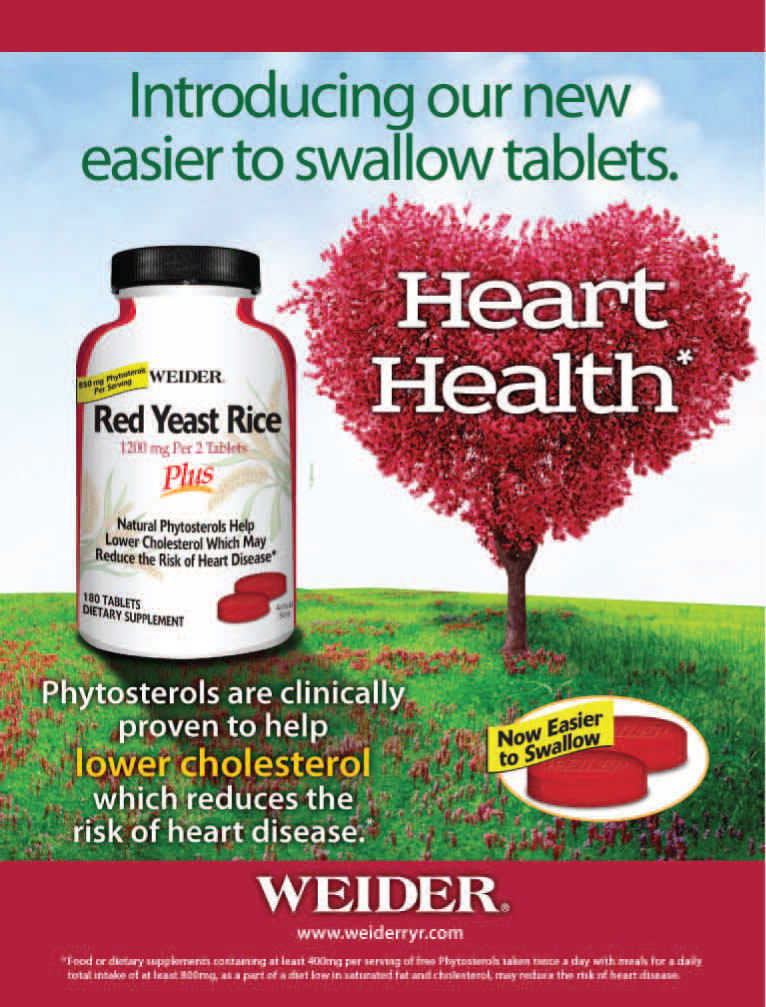

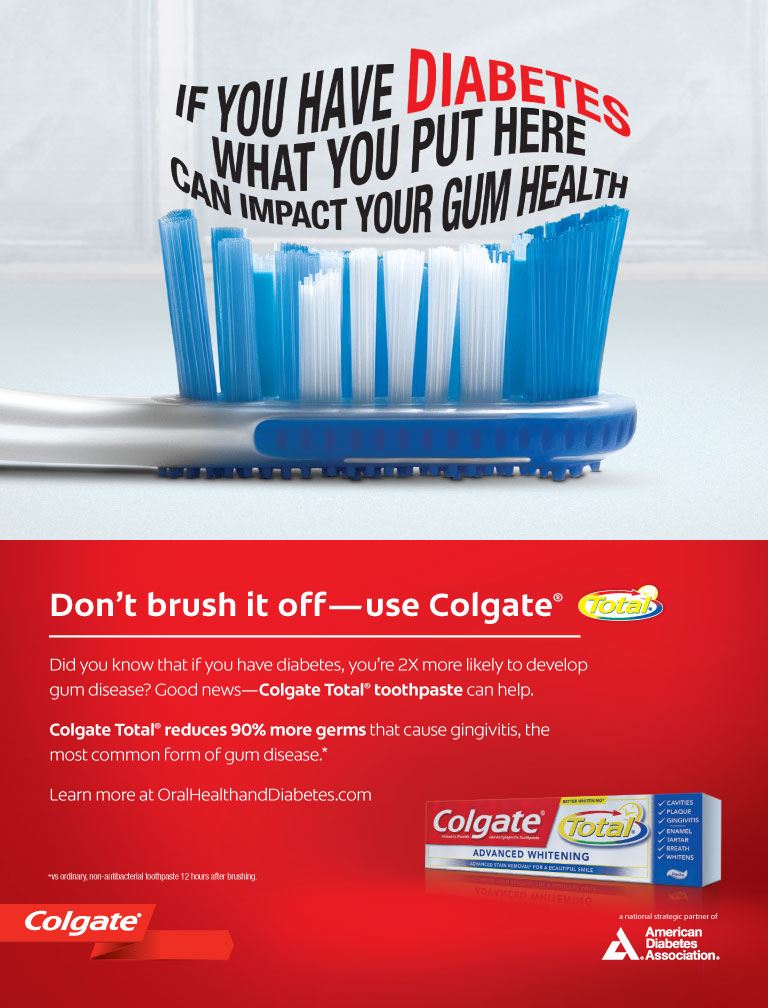
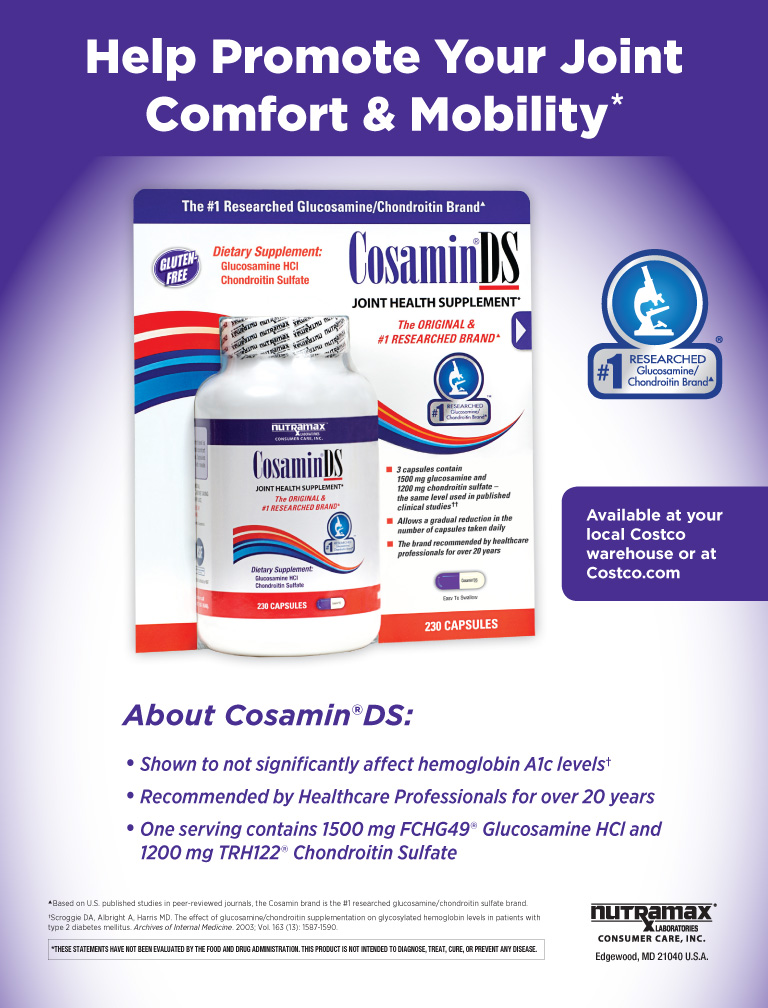

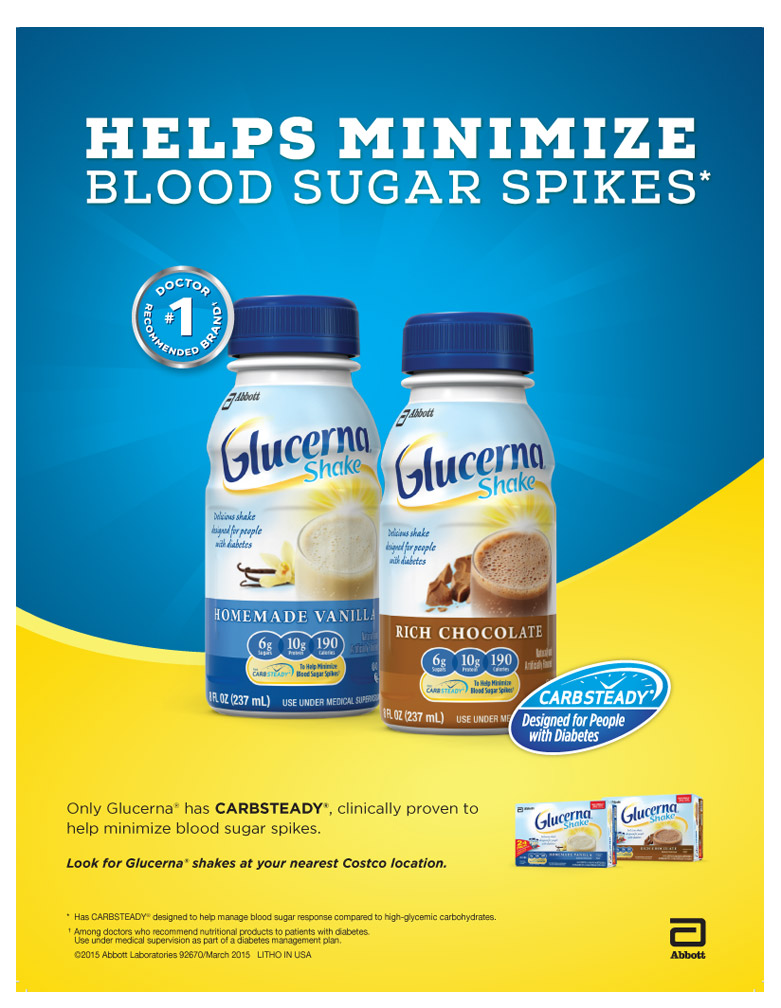
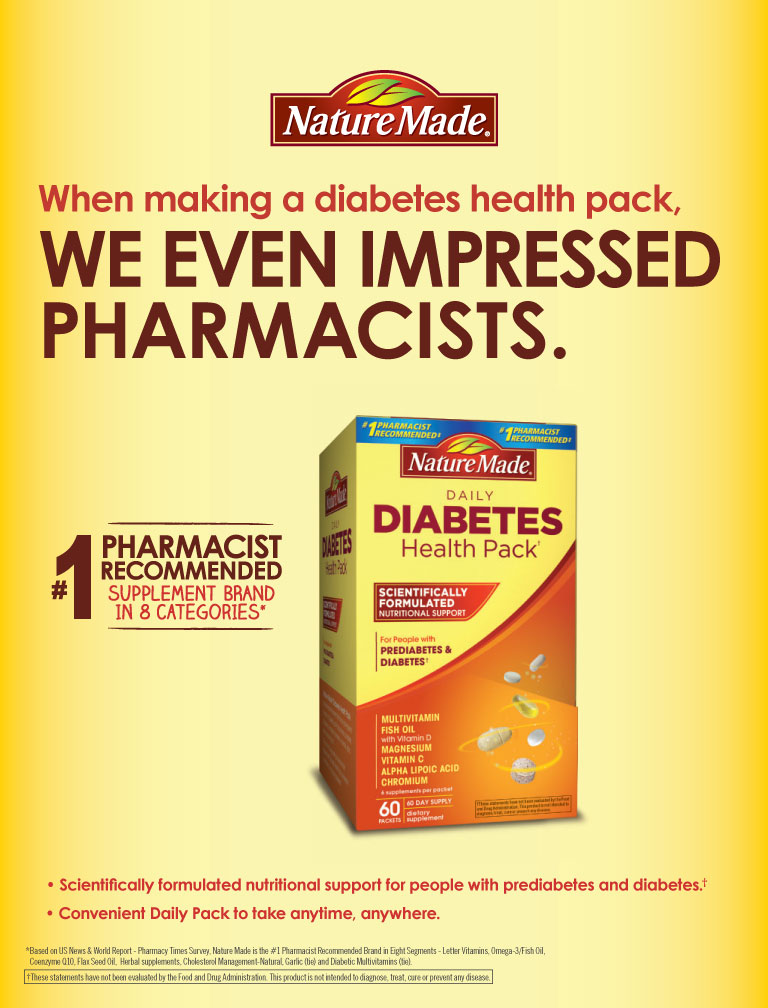

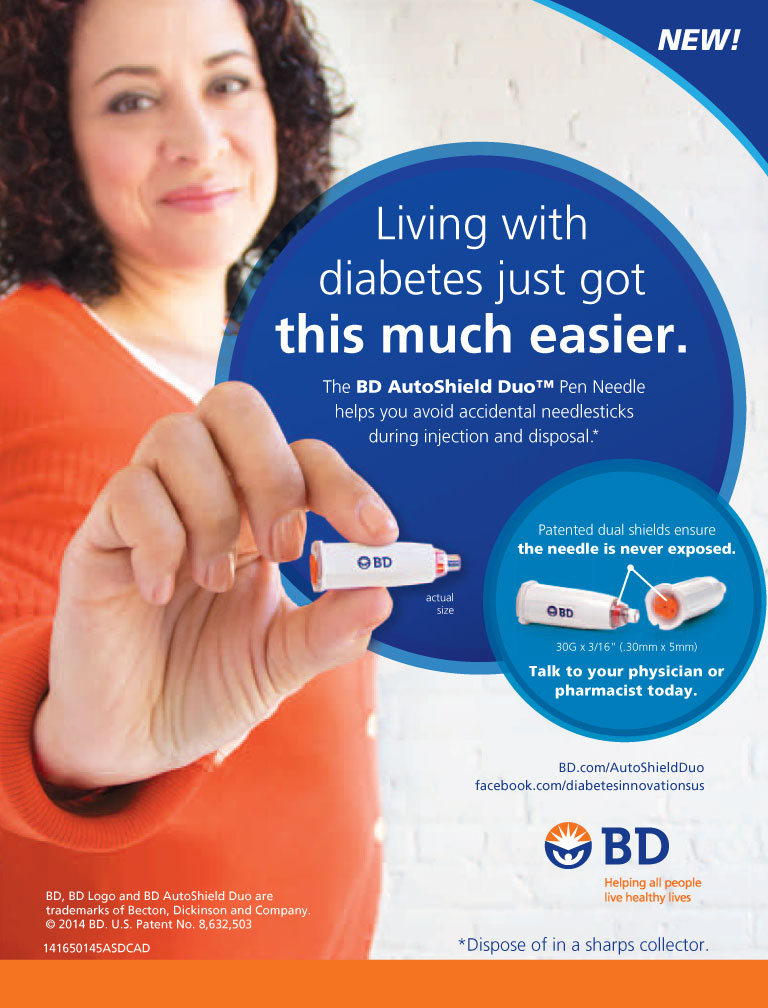
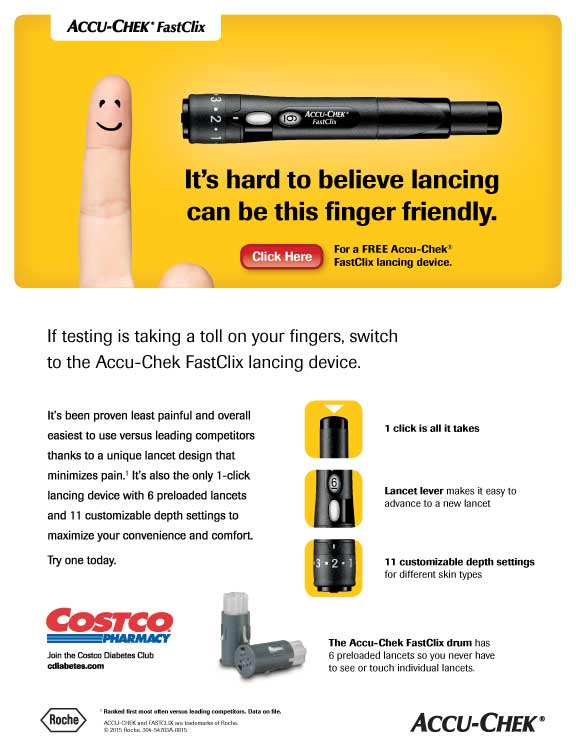 >
>